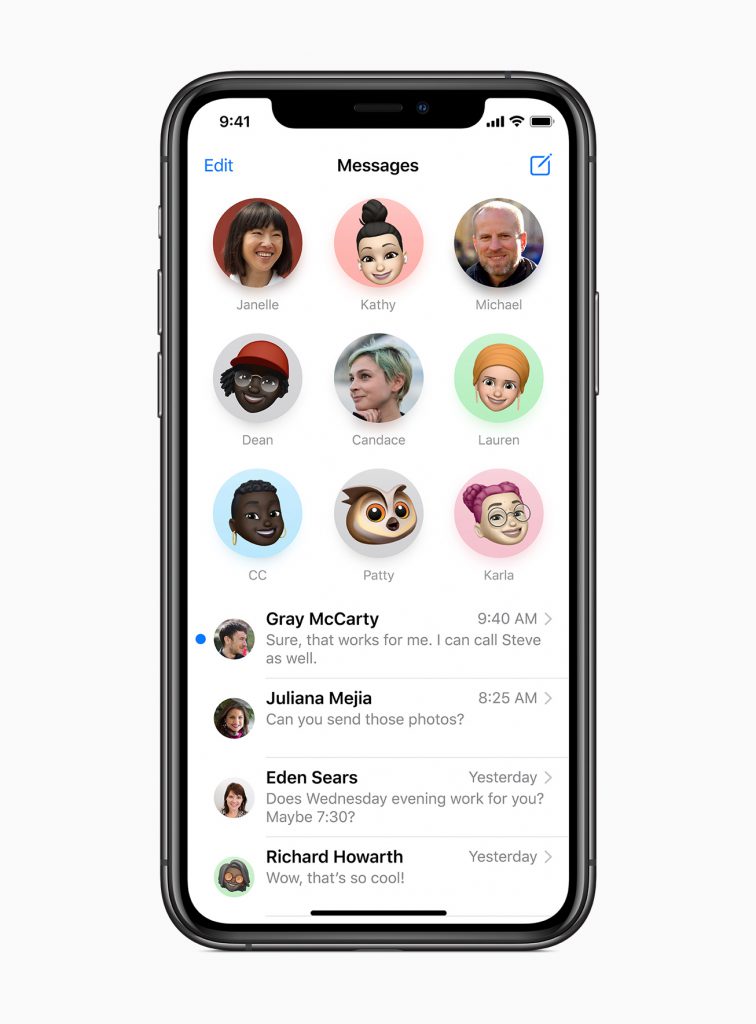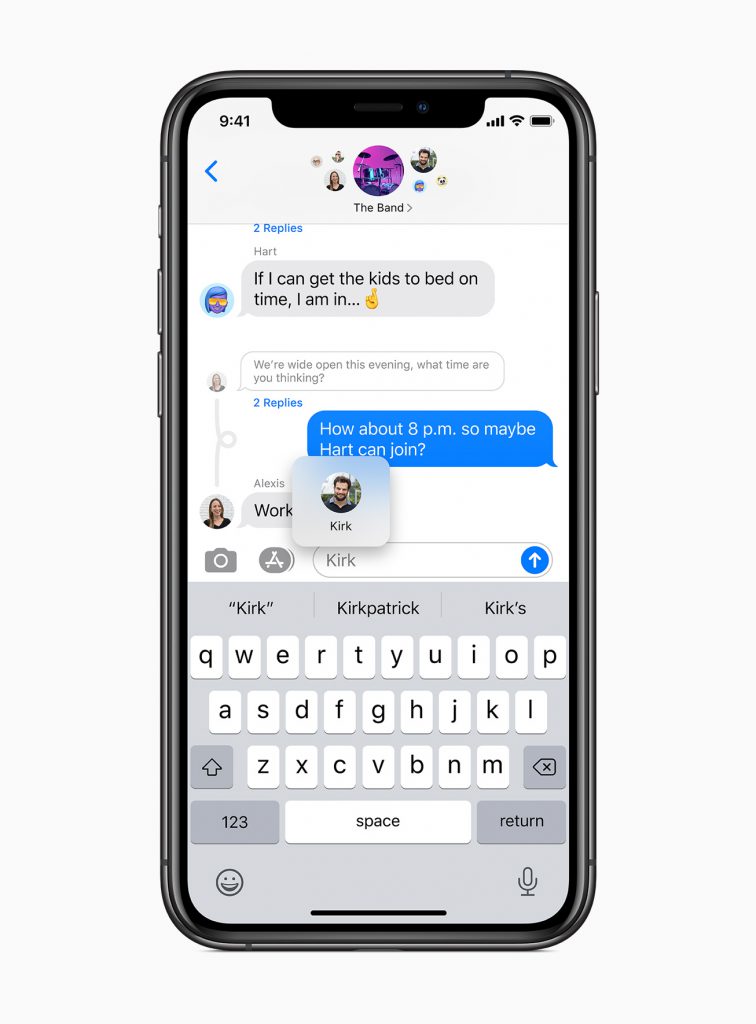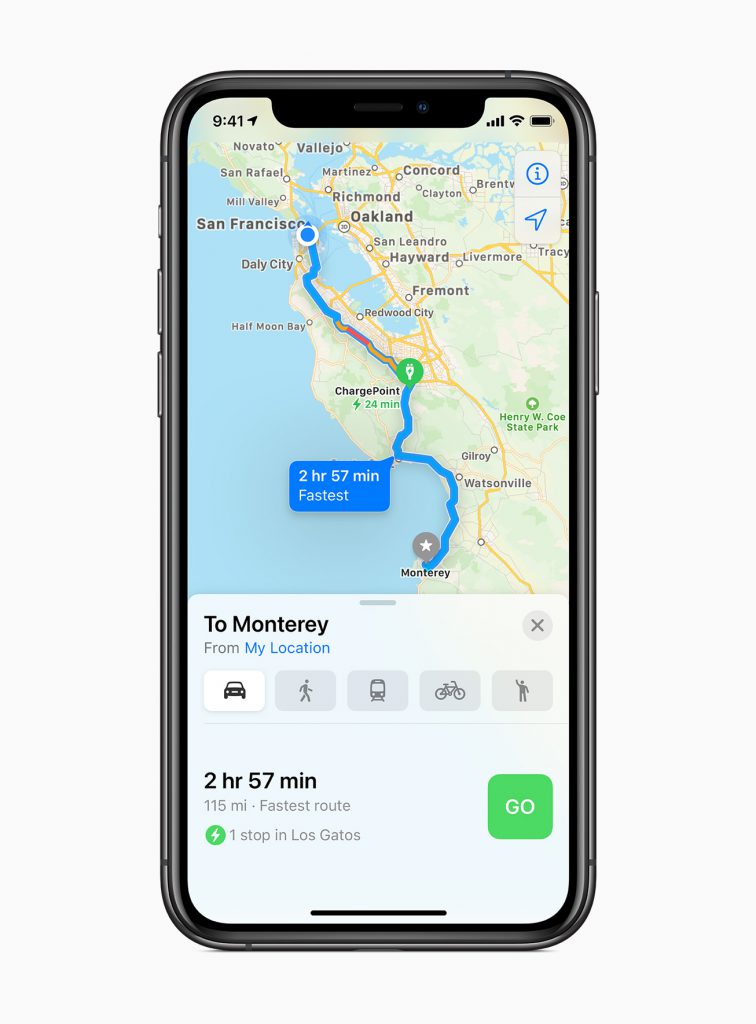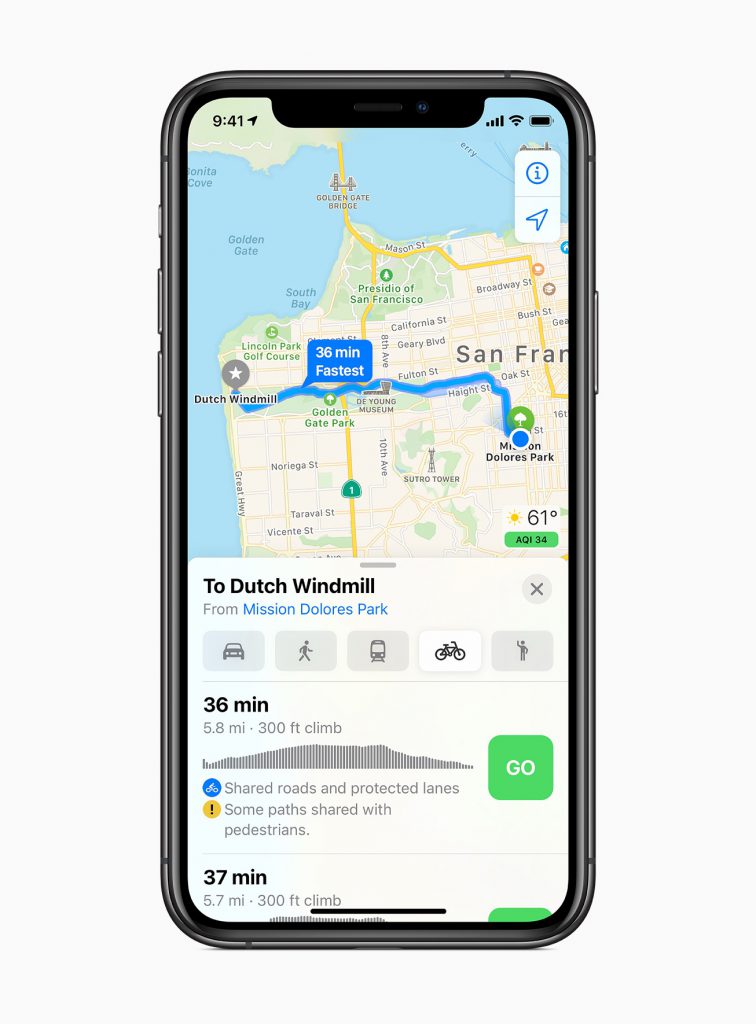Cross-platform apps are an ideal choice for app developers looking to develop an app for both iOS & Android platforms. However, software developers often face a dilemma: which is better – cross-platform or native applications?
With cross-platform applications, developers can reach a broader audience (both Android and iOS) with their products. On the other hand, native applications provide better performance and fewer crashes.
Luckily, Swing2App no-code app builder has both areas covered as our way of cross-platform app building is to create native-like apps for both: Android and iOS!
Swing2App no-code app builder users just have to build a single no-code app and then later choose on which platform they want to publish their app. This approach gives our users a relaxing app-building experience, where they don’t have to worry about the platform, as they can decide later if they want to publish on Android, iOS, or both platforms. Many businesses and app creators now understand the value of being present on both the App Store and Play Store simultaneously, all while managing costs efficiently.
Creating an app that works on multiple platforms online not only reaches a broader audience but also provides simplicity and cost-efficiency. Hence, opting for cross-platform mobile development is a smart choice.
Let’s understand everything about cross-platform apps.
WHAT ARE CROSS-PLATFORM APPS?
As mobile apps increasingly become vital for businesses, it’s crucial to grasp the complexities of app development. Cross-platform mobile development involves creating software apps compatible with multiple mobile operating systems.
In the context of cross-platform apps, developers have the option to share a portion or even the entirety of the source code. This allows developers to build and launch mobile resources that function on both Android and iOS without creating separate versions for each platform.
Why is cross-platform app development important in 2023?
Cross-platform mobile app development enables developers to create apps using a single codebase, thereby lowering development expenses. Additionally, it extends the reach of your app to a wider audience. This approach ensures a uniform user experience across various platforms, simplifying the process of maintenance and updates.
The mobile app industry offers over 4.4 million apps on Appstore and Google Play, installed on 6 billion smartphones worldwide, as of 2023. If you plan to develop an application, then cross-platform apps can give you access to both the Android & iOS app marketplaces.
THE DIFFERENCE BETWEEN NATIVE AND CROSS-PLATFORM APP DEVELOPMENT
The debate between Native and Cross-platform app development has been ongoing within the tech community for years. Some experts prefer native apps, while companies like Uber are venturing into cross-platform app development with their framework, Ribs, to revamp their driver app.
Both native and cross-platform development technologies continuously evolve. This dynamic nature suggests the need to revisit these topics periodically to assess which options currently excel. Native app development prioritizes creating a well-tailored design closely aligned with the target platform (such as Android or iOS), simplifying the process and avoiding the complexity of spanning multiple platform app development.
On the other hand, cross-platform frameworks aim to create apps that cater to a wide range of devices, reaching a broad audience during the programming and development phase.
| Parameter | Cross Platform Apps | Native Apps |
| Cost | Relatively low cost of development | High cost of development |
| Code Usability | Single code can be utilized for multiple platforms for easy portability | Works for only a single platform |
| Device Access | No assured access to all device APIs | SDK provides access to the device’s API without any issues |
| UI Consistency | Limited consistency | Consistent with the UI components of the device |
| Performance | High on performance but may lag and hardware compatibility issues may occur. | Seamless performance |
CHALLENGES IN THE CROSS-PLATFORM APP DEVELOPMENT PROCESS
A few years ago, cross-platform app development was primarily focused on creating simple mobile apps and games. However, as time has progressed, emerging technologies have made cross-platform development more adaptable, robust, and versatile.
1. Compatibility issues with different devices and platforms (iOS &Android)
When it comes to cross-platform mobile app development, compatibility can present challenges. Problems may arise when apps are not designed to run smoothly on certain devices, leading to performance issues.
2. Limited access to device hardware features
Cross-platform frameworks operate differently on multiple devices, making it challenging to utilize the unique features of each device. This limitation stems from the tools not having direct access to the hardware of these devices.
3. App Performance issues as compared to native apps
Performance issues can occur due to inconsistent communication between native and non-native components of devices, potentially affecting the user experience.
4. Challenge in keeping up with updates to different operating systems and devices
Cross-platform app developers often struggle to ensure that their apps remain compatible with evolving devices and operating systems.
Some other challenges faced by the cross-platform apps may include:
- Maintaining consistency across various devices and operating systems.
- Addressing performance-related issues to enhance the user experience.
- Security concerns, especially for business apps handling sensitive user data.
Despite these challenges, the advantages of cross-platform app development often outweigh the drawbacks, making it a valuable approach for many projects.
BENEFITS OF CROSS-PLATFORM MOBILE DEVELOPMENT
Cross-platform applications possess code that is shareable and can be employed across various platforms. This single codebase expedites the development process and results in cost savings, particularly when it comes to repetitive tasks like handling data serialization and making API calls. Quicker development generally leads to a more rapid time to market.
Embracing the cross-platform approach allows project managers to utilize their development resources more efficiently since there’s no need to allocate separate resources for creating apps for different platforms.
Additionally, a reduced volume of code reduces the likelihood of encountering bugs and security issues, thereby lessening the time and effort required for code testing and upkeep.
Another advantage is that, in many instances, developers only need proficiency in standard programming languages. Development tools and frameworks are readily available to handle the majority of the complex tasks.
Furthermore, cross-platform apps provide a broader reach as they can cater to the needs of diverse audiences using various operating systems and devices.
DRAWBACKS OF CROSS-PLATFORM MOBILE DEVELOPMENT
Performance problems represent the most prevalent concern encountered in cross-platform applications. A significant number of these applications offer restricted functionality due to their inability to accommodate numerous functions exclusive to native mobile devices, such as advanced graphics. The subpar design also contributes to this issue, leading to an unsatisfactory user experience.
Nevertheless, advancements in development technologies and frameworks are actively addressing these challenges, giving rise to cross-platform apps characterized by the following attributes:
- Flexible.
- Adaptable.
- Stable.
- exceptional performance
- Extensive functionality
- Capability to deliver a positive user experience (UX).
CROSS-PLATFORM APPS: A COST-EFFECTIVE SOLUTION FOR BUILDING MOBILE APPS MULTIPLE APP STORES
The mobile app landscape is primarily dominated by two major players: the Google Play Store and the Apple App Store. Companies cannot afford to overlook their presence on either of these platforms. However, developing code-based apps for each of them can be a costly endeavor.
Cross-platform apps offer a solution to this challenge. These apps follow the principle of “Write once, run everywhere,” allowing one app concept to function across different platforms. Their popularity has surged in recent years due to their user-friendliness, time-saving capabilities, and cost-effectiveness. Currently, approximately 33% of mobile developers utilize cross-platform technologies or frameworks, a number expected to continue its upward trajectory in the coming years.
In 2020, Android and iOS app revenue collectively reached a staggering $111 billion, nearly doubling the revenue from 2017. These impressive figures, among other factors, have spurred the creation of a total of 5.7 million apps available on the App Store and Play Store combined.
As these numbers continue to climb, developers seek swift and cost-effective methods for app development. Cross-platform development tools not only facilitate rapid app creation for multiple platforms but also offer a budget-friendly approach to the process.
NOTABLE CROSS-PLATFORM APPS
There are numerous instances of apps constructed utilizing cross-platform development tools. Currently, one-third of all developers opt for cross-platform solutions when building apps, and these figures are expected to increase as more companies prefer these apps over native alternatives. Here are a few noteworthy examples of cross-platform apps:
Gyroscope
This health and productivity company leveraged React Native, a JavaScript framework capable of constructing apps for both iOS and Android, to create their app. Utilizing React’s capabilities, they presented data in two visually appealing and well-designed formats.
Xianyu by Alibaba
Xianyu, a platform for second-hand goods under the Alibaba Group’s e-commerce umbrella, required a robust system for implementation and scalability. Therefore, they opted for Flutter, a framework developed by Google that enables the creation of applications for mobile, web, and desktop using a single codebase.
However, they have built these apps with the help of a highly skilled IT team that used the coding languages mentioned above. With Swing2App no-code app builder you don’t need to worry about coding at all, you can build cross-platform apps for Android, iOS, and web apps without any coding at all!
HOW TO BUILD A CROSS-PLATFORM APP WITH SWING2APP
Swing2App no-code app builder provides a speedy and budget-friendly answer to creating cross-platform applications. Instead of laboriously coding hundreds of lines for each platform, you can create a single app and deploy it across multiple platforms. What’s more, this can all be achieved effortlessly using the drag-and-drop functionality. In essence, developers can now construct apps without the need for manual coding. To create your own cross-platform app, whether it’s a Flutter app, an Android tablet app, or any other variety, simply follow these steps with Swing2App:
Signup Swing2App to create mobile apps
Swing2App no-code app builder offers a free sign-up option, allowing you to build your apps without any initial cost. You only pay when you’re ready to publish your app.
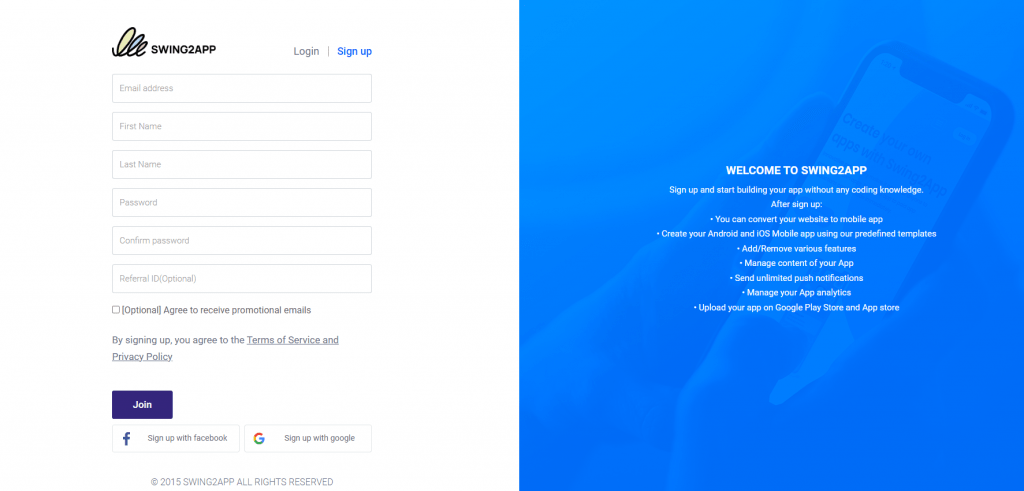
Click here to register for Swing2App no-code app builder.
Additionally, Swing2App no-code builder provides affordable subscription plans, ensuring that you can create and launch your apps within your budget.
Once you log in, you will be directed to the Maker V3 page of the Swing2App no-code builder.
Here click on the “+” icon in the top left of the bar to create a new app, here you will get a pop-up screen where you can choose which type of app you want to create. Here, we will go with the “fast app creation”.
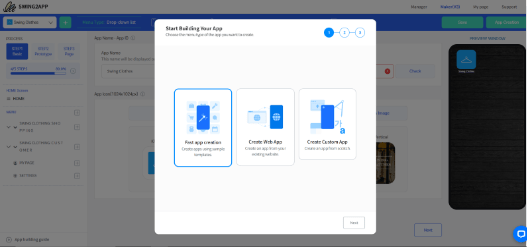
Fill out the basic details of your app.
This is the first step where you have to update your “App Basics” like your app name, app icon, and splash screen, and create a unique alphanumeric app ID. With this, your first step is completed.

Choose a template in the “prototype” section
Once you’re in your project, you’ll receive a guided tour of the Swing2App no-code builder, which you can choose to watch or skip. You can customize various features and styles, adding a personal touch by adjusting fonts and colors.
Next comes step 2 “Prototype”: you have to choose your app UI (prototype), Swing2App no-code app builder offers 5 variations as below:

Read more about the 5 Types of UI In Swing2app to Create a No-Code App
The Swing2App no-code app builder provides a variety of templates designed to simplify and expedite the app-building process. Select a template that suits your requirements and begin editing. Alternatively, you can initiate a new project from scratch by selecting the “Create Custom app” option in the beginning.

Upload content
Step 3 is “Page”, where you can customize your home page, add or delete menu options, add features and functionalities, and other advanced menu settings (like hiding a menu from a certain audience, etc.). To these menu options, if you have content such as images or audio files, you can easily upload them to the app using the Swing2App no-code builder. You’ll find user-friendly options and Swing2App Analytics support for creating engaging apps.
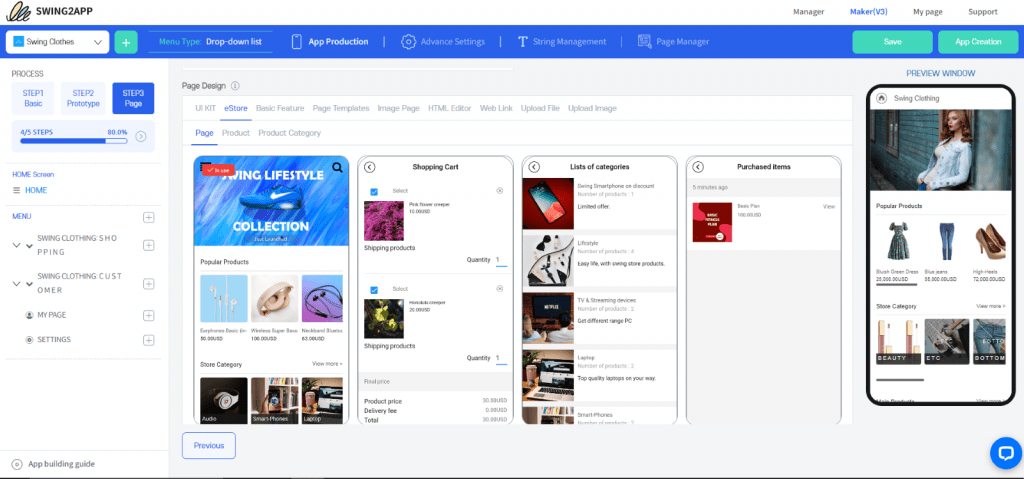
Monetize
Swing2App no-code builder also allows you to monetize your app by setting up Banner Ads, Interstitial Ads, and Native Ads, turning your app into a potential revenue stream. Moreover, Swing2App doesn’t charge any commission on ads , the entire ad revenue is 100% yours!
Also read: How to Make Money from Swing2App AdMob App Integration?
Upload to App Store
This single app can be submitted to both the App Store and Play Store Market, simplifying the distribution process across multiple app stores.

Additionally, Android users can download the app and test it on their device which helps you to determine if your app is user-friendly by yourself, but Apple users can’t. However, Apple users can get the app preview on Swing2App no-code app builder itself where they can even choose the device model which they want the check their app. You can preview your app by clicking on the “Preview window” on the top of the visual editor.
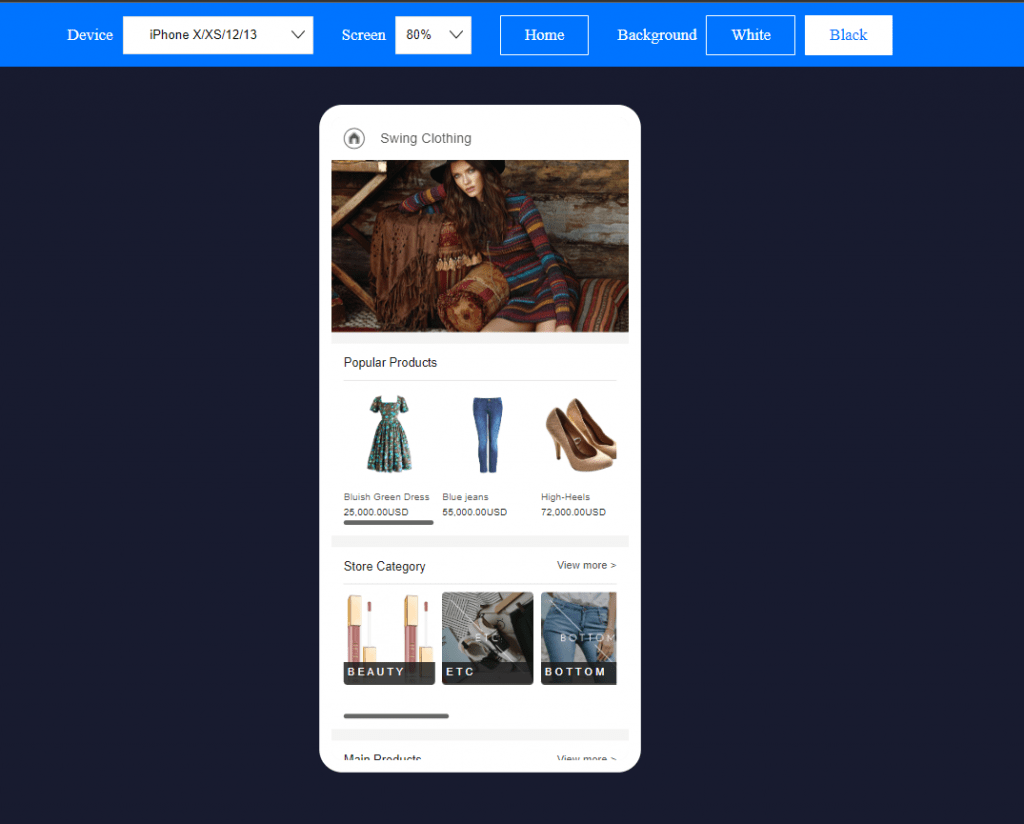
BENEFITS OF SWING2APP CROSS-PLATFORM BUILDER
Most multi-platform app builders still require some degree of coding skills. But Swing2App’s platform allows building cross-platform apps with no coding skills at all. Here are a few benefits of using Swing2App no-code builder:
Reach out to all mobile audience
Restricting your app to just one app store is no longer sufficient. By developing apps for major platforms like the Play Store and App Store, you can tap into a much larger target audience. With Swing2App no-code builder, you can effortlessly create iOS and Android apps, maximizing your exposure to a diverse audience.
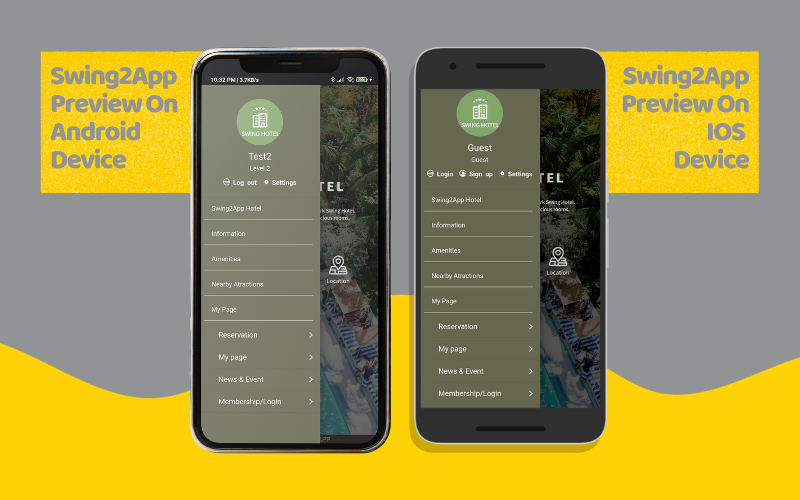
Easy to use
Which option sounds more appealing: writing hundreds of lines of code for each app from scratch, or utilizing a no-code builder to create a single app with no code that functions on multiple platforms? If the latter option sounds preferable, Swing2App no-code builder is the ideal solution!
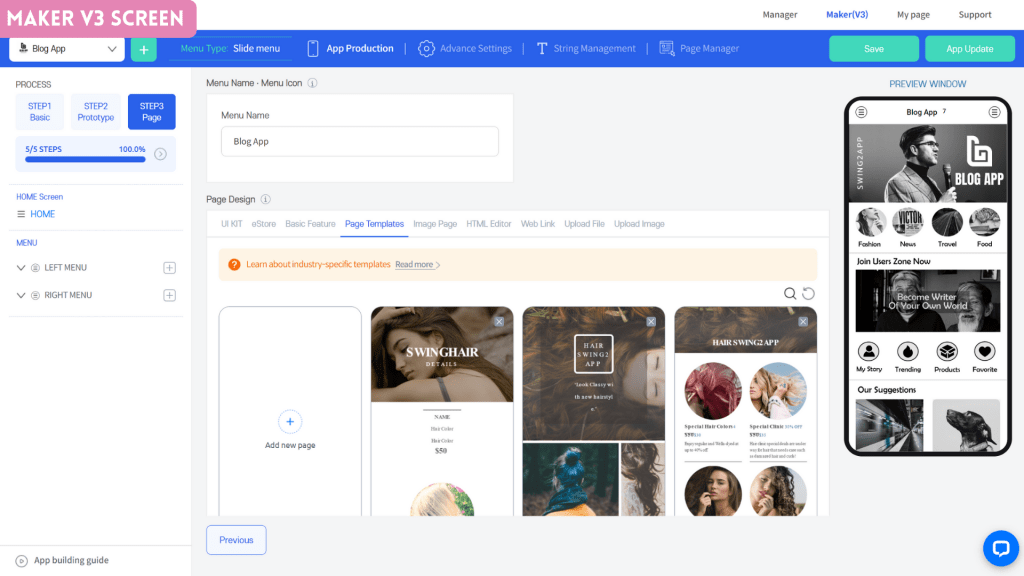
Easy to maintain
Managing a single app for all platforms is straightforward and allows for easy modifications. Moreover, updates can be swiftly synchronized across all platforms—a benefit that would be impractical with native apps.
Save money, Make Money
The concept of “Write once, run everywhere” has inspired multi-platform app creators. By eliminating the need to hire expert developers for each platform, companies can save a substantial amount of money. These cost savings can be channeled into investing in tools to facilitate business growth.
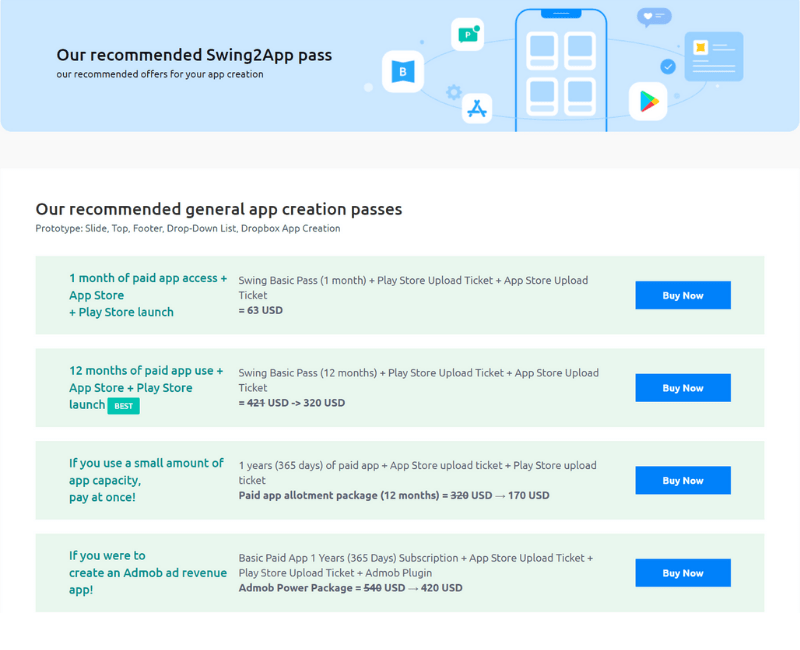
CREATE A CROSS-PLATFORM APP WITH SWING2APP!
With Swing2App no-code builder, developers can swiftly produce cross-platform apps in a matter of minutes. These apps are compatible with various platforms, resulting in cost savings compared to native apps. The remarkable part is that you can achieve all of this without the need for coding!
Furthermore, developers have the flexibility to incorporate various features such as Weblinks and Photo Galleries to enhance the interactivity of their apps. Additionally, advanced monetization techniques offer the potential for generating passive income.
Give Swing2App no-code builder a try and make cross-platform apps today!
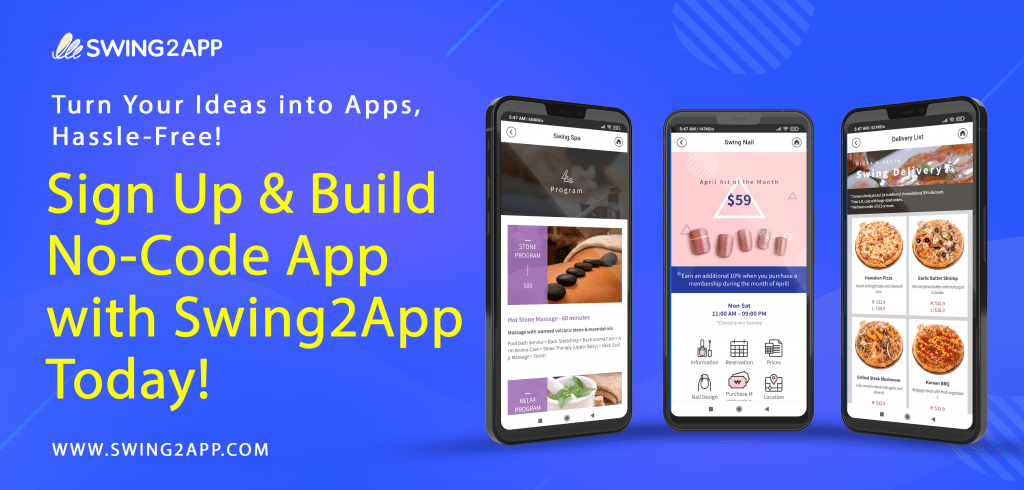
Apple has released the new iPhone 14 and iPhone 14 Pro. This year, Apple launched the same number of iPhones as last year and the year before. Due to Apple’s decision to name this year’s iPhones differently and their differing features, the iPhone line-up is more confusing than ever before.
Among the brand-new iPhones, there are four basic versions: regular, Plus, Pro, and Max. Pre-orders began on September 9, with availability for iPhone 14 from September 16, and availability for iPhone 14 Plus will start from October 7.
If you’re wondering which one to choose or is the latest line-up is worth upgrading or not, here’s a quick explanation.
First, let’s begin with the iPhone 14 regular model.
iPhone 13 vs iPhone14
The latest reports are indicating that the pro and the pro Max make up to 80 percent of the pre-orders of the expensive phones everybody’s ordering and skipping the standard iPhone 14. Let’s discuss why that might be the case, if you watch Apple’s presentation then you recognize that this phone has a little bit more in common with the previous generation.
If you have already purchased iPhone 14 and no one is blinking an eye, it is not your fault. Both iPhone 13 and 14 look exactly the same except for the colours and camera bump which is hard to recognize. And this is perhaps the reason why pre-orders for iPhone 14 are Worse than For iPhone 13 Mini.
Moreover, it is for the first time that the chip is almost identical because the A15 bionic is still in the iPhone 14. The only difference is it’s using the A15 from the iPhone 13 Pro which means that you might get a little bit more performance if you’re playing games because of that extra GPU core now in terms of the design they’re pretty much identical. Also, iPhone 14 has aluminium build similar to iPhone 13, but it comes in a new blue colour.
So, if you already have a previous model of iPhone, it won’t be much of a change to switch to iPhone 14 regular model for $800, when you can get an iPhone 14 pro for just paying $200 extra.
However, don’t be disheartened because this time while you pay $200 extra you get actually much more as compared to the case in previous iPhone lineups in which regular and pro had much in common.
So, let’s check what is new in iPhone 14 pro, pro max, and plus.
iPhone 13 Pro vs iPhone 14 Pro, Pro max, and Plus
Difference between regular and Pro series of iPhone 14:
- Newer chip on the Pro
- Different build materials for chassis: aluminium on regular vs stainless steel on Pro
- Higher 120Hz refresh rate on Pro
- Higher outdoor peak brightness on Pro
- Always On Display on Pro
- New notch design and related software functions on Pro
- Higher storage options on Pro
- 48 MP count primary camera on Pro
- An added third camera on Pro, handling telephoto
- Night Portraits, ProRaw, and Macro are Pro-exclusive camera features
- LiDAR Scanner on Pro
Difference between regular iPhone 14 and 14 Plus; and iPhone 14 Pro and 14 Pro Max:
- Size difference for display and overall chassis: Plus, and Pro Max are bigger
- Battery size difference: Plus, and Pro Max have a bigger battery and will last longer, but will also take longer to charge
Let’s delve deeper into the differences, which will help you choose the best model of the iPhone 14 line up.
There are three major things that are new with the iPhone 14 Pro: the internals, the externals, the display, and the cameras.
1)The internals:
A) Latest A16 Bionic Chip
As expected, only the Pro models have seen a spec bump this year, meaning you’ll have to spend more money to get the best Apple silicon. The company’s new A16 Bionic brings a lot of meaningful upgrades to the table but it’s limited to the iPhone 14 Pro and the iPhone 14 Pro Max. The standard iPhone 14 and the iPhone 14 Plus, on the other hand, will use last year’s A15 Bionic. It’s still an upgrade from the iPhone 13 because new ones use the A15 Bionic with a 5-core GPU instead of the 4-core SKU.
Apple’s A16 Bionic may not bring any significant upgrades to the overall performance, but it adds things like the display engine for a significantly better experience. Not to mention, it’s also significantly more power-efficient so you can expect to see better battery life on the Pro models this year.
B) Storage
The non-Pro iPhones start at 128GB and top out at 512GB storage for the top-of-the-line variant, while the new iPhone 14 Pro models can be bought with up to 1TB of storage. Do keep in mind that you’ll have to pick up at least the 256GB variant of the Pro variants to take advantage of features like ProRes video recording at 4K-30fps.
C) More battery life
There is a 3,279mAh battery in the iPhone 14, which is a bit larger than the battery from the prior-generation iPhone 13. The iPhone 14 Plus has a 4,325mAh battery. The iPhone 14 offers up to 20 hours of battery life for video playback, up to 16 hours for streaming video playback, and up to 80 hours for audio playback, which is an improvement over the iPhone 13 by about an hour.
The iPhone 14 Plus offers up to 26 hours of video playback, up to 20 hours of streaming video playback, and up to 100 hours of audio playback.
Both devices are fast-charge capable and can charge up to 50 percent in 30 to 35 minutes with a 20W or higher power adapter.
D) New sensors of Car Crash
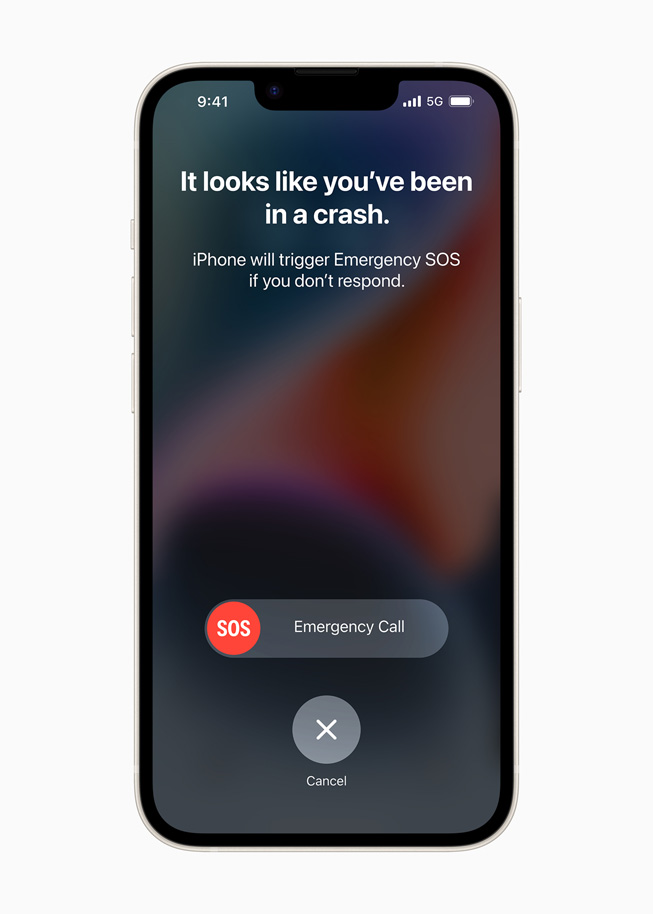
The whole iPhone 14 line-up debuts first ever safety features that can deliver aid in an emergency when it counts the most. With a new high dynamic range gyroscope and dual-core accelerometer that can detect G-force readings of up to 256Gs, Crash Detection on the iPhone can now identify a serious auto accident and quickly contact emergency services when a user is unconscious or unable to reach their iPhone. These capabilities expand upon already-existing features like the barometer, which can now detect changes in cabin pressure, the GPS, which provides extra input for changes in speed, and the microphone, which can identify loud noises characteristic of serious auto accidents. Even more precision is provided by sophisticated motion algorithms created by Apple that were honed using more than a million hours of actual driving and collision record data.
E) eSim only
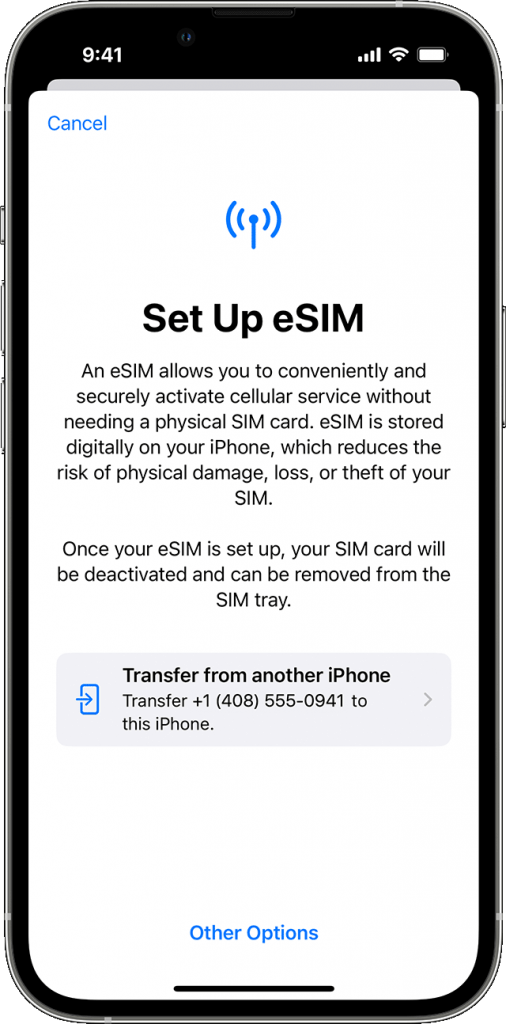
As with the iPhone 13 models, the iPhone 14 lineup support 5G connectivity (sub-6GHz and mmWave in the United States), and they use a new Qualcomm X65 modem. In the United States, iPhone models ship without a physical SIM card as carriers now use eSIM. For people who switch phones or use sim cards for data when traveling this may be a point of concern.
F) Emergency Satellite communications: SOS
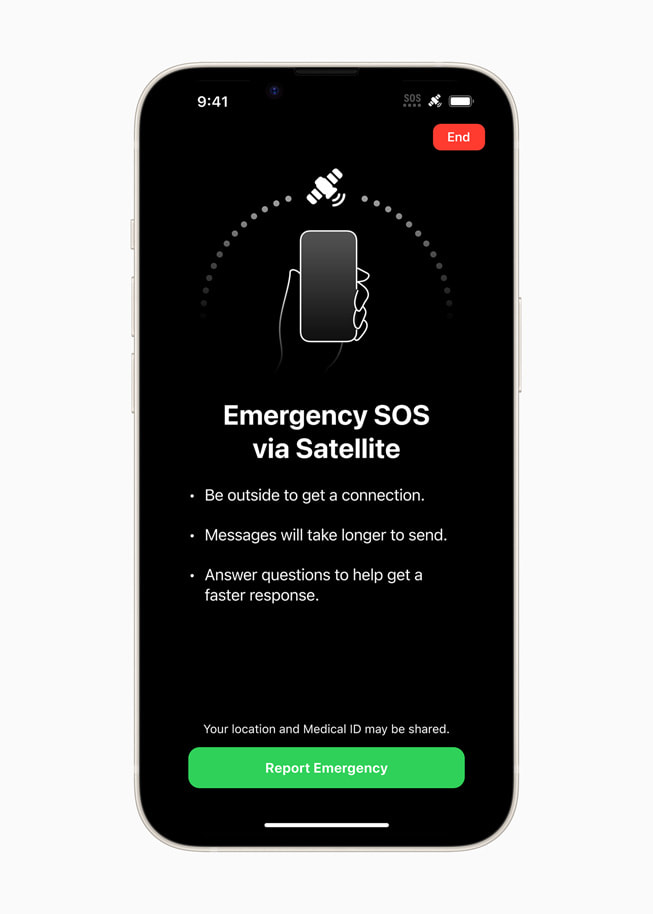
Another new feature of the iPhone 14 lineup is Emergency SOS via satellite, which combines specialised parts that are tightly linked with software to enable antennas to connect directly to a satellite, enabling communicating with emergency service providers when cellular or Wi-Fi connectivity is not available. Sending a message through a satellite might take minutes since they are moving targets with minimal bandwidth. When there is no cellular or Wi-Fi connection, this ground-breaking technology also enables users to manually communicate their position with Find My over satellite, giving them peace of mind while trekking or camping off the grid. Users in the US and Canada will be able to this feature via satellite in November, and the service will be free for the first two years.
2) The Externals
A) New colours
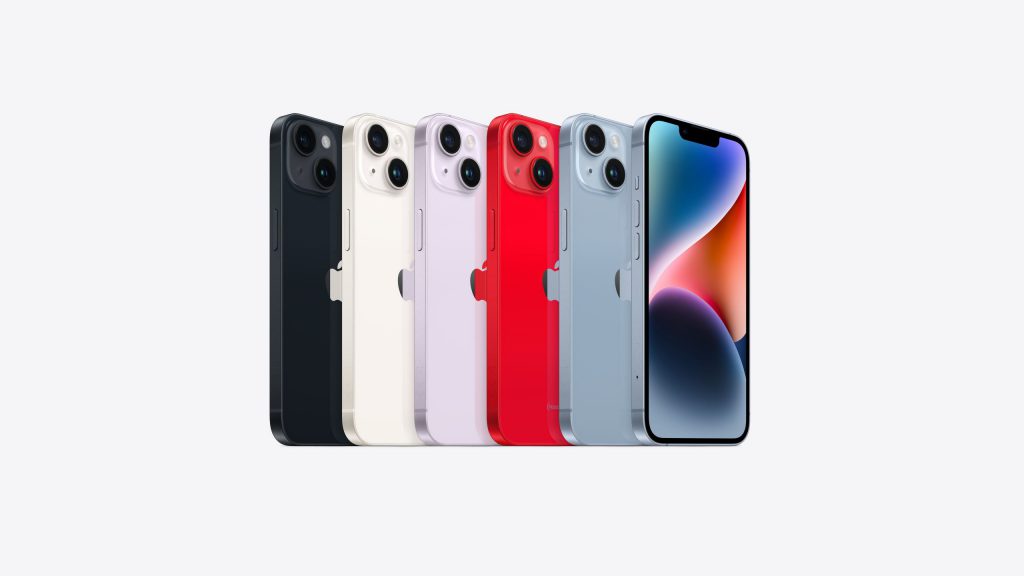
The new colours for the iPhone 14 lineup are : blue and purple and the pro version have a matte finish while as regular version doesn’t.
B) Bigger Camera Bump
This is not a stark difference between the 14 and 13 line-up, nevertheless it is worth mentioning your iPhone 13 case won’t fit iPhone 14 because of this reason.
3) The Display
A) 120 Hz OLED Display
The iPhone Pro models are the only iPhones with support for ProMotion technology with adaptive refresh rates up to 120Hz, which gives users a fluid and smooth experience. The regular iPhone 14 and the iPhone 14 Plus still have the 60Hz display.
B) Always on Display/ Lock screen
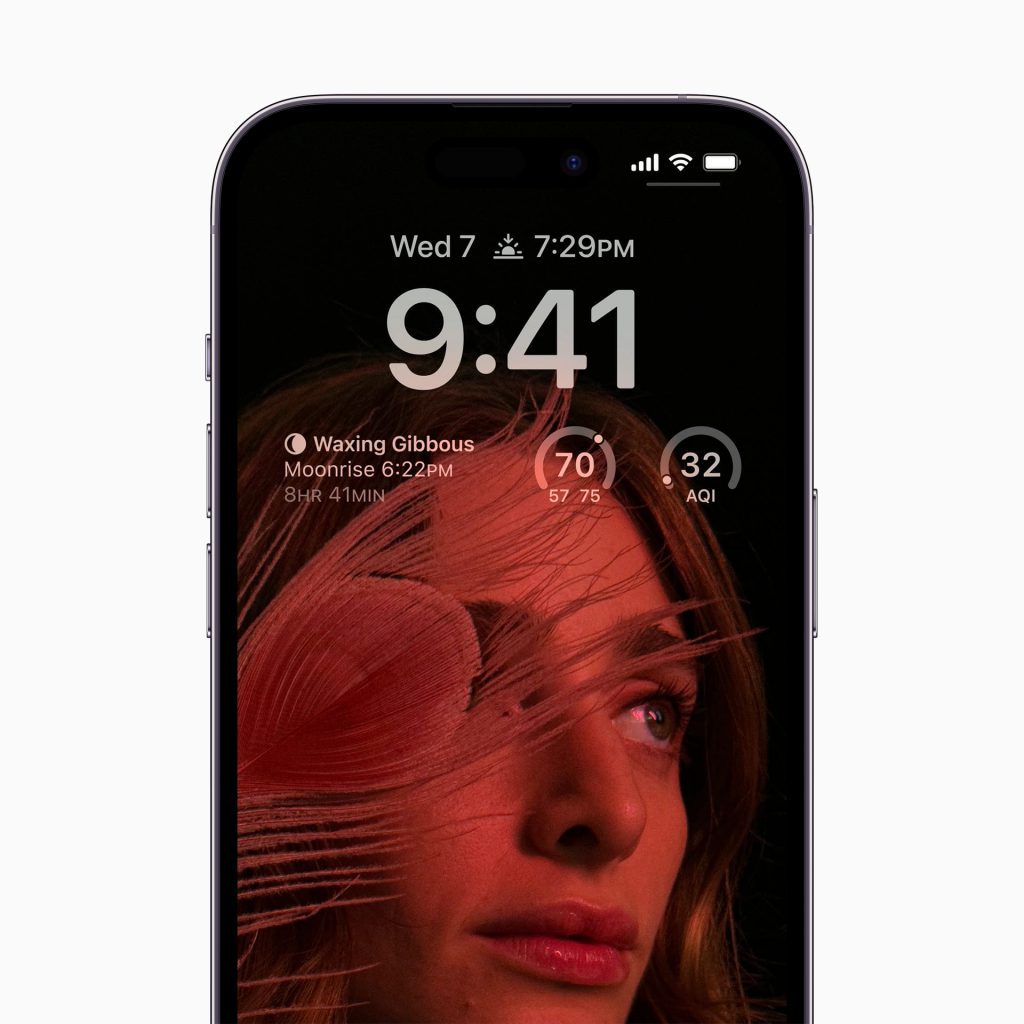
The iPhone Pro models support the Always-On display, which was already available in android, now apple has it too. This is enabled by the new Apple silicon; the A16 Bionics’ new display engine, which is also supports the brightness of up to 2,000 nits on the iPhone 14 Pro and the iPhone 14 Pro Max. The cheaper iPhone 14 models are still use the last year’s A15 Bionic chipset, so they don’t support Always-On display.
C) Dynamic Island
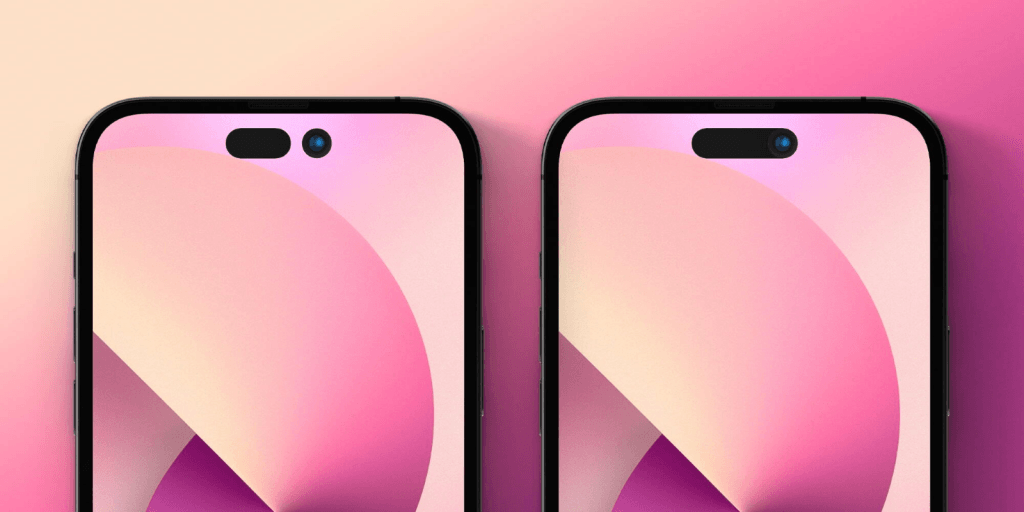
The new iPhone 14 Pro and the iPhone 14 Pro Max have a pill-shaped cut-out on the top of display screen instead of a notch over there. This is a big change for the new iPhone 14 line up as they’re the first ones. It’s named Dynamic Island and it has an inbuilt software that enables it to move around and animate to show you different UI elements.
The Dynamic Island, however, is available only in the Pro models, meaning the regular iPhone 14 and the iPhone 14 Plus still have the notch on the top. In fact, Apple didn’t even reduce the size of the notch on the iPhone 14, so it’s exactly like the iPhone 13’s notch.
4) The Camera
Pro series is all about camera. It is safe to say that the Pro models have received some major camera upgrades in 2022 but the standard iPhone 14 and the iPhone 14 Plus use the same dual-camera system as the one in iPhone 13.
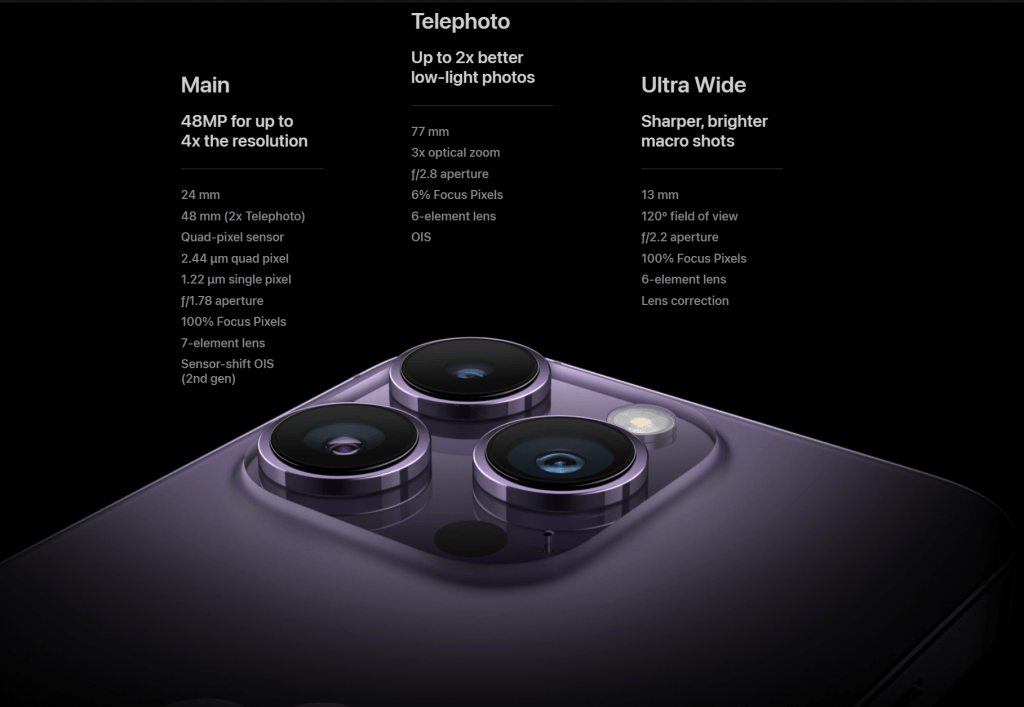
A) 48 Megapixel sensor: a big leap from 12 megapixels
iPhones are moving away from 12MP sensors to 48MP ones for the first time. For “professional” photographers and videographers, this is expected to be a big leap. Due to the new photonic engine, low-light photography will be greatly improved. As for the ultra-wide and telephoto lenses, you can expect some slight improvements over last year’s iPhone 13 Pro models. However, the 48MP sensor on the Pro models is the real showstopper.
In addition to the Photonic Engine, the non-Pro iPhones also have a dual-camera setup with 12MP main and ultra-wide lenses.
The larger sensor gives you more light gathering and sharpness, as well as faster shutter speeds, so motion is frozen more often in less-than-ideal conditions. Moreover, the shorter shutter time lets me take low-light pictures. However, the larger sensor also allows you to get a shallower depth of field without a portrait mode, which is more than an iPhone has ever been able to achieve.
B) Second-generation focus shift
100% coverage with focus pixels has been pretty locked in on tracking subjects and keeping things in focus even with the shallow depth of the field.
- Additional new features: new Action mode, true depth, optical image stabilization, 100% focus pixels, new F1.78 lens, a big leap in low-light performance & Ultra-wide improvements.
Summary
| Specification | iPhone 14 | iPhone 14 Plus | iPhone 14 Pro | iPhone 14 Pro Max |
| Build | Ceramic shield front Glass back Aluminium mid-frame IP68 dust and water resistance | Ceramic shield front Glass back Aluminium mid-frame IP68 dust and water resistance | Ceramic shield front Glass back Stainless steel mid-frame IP68 dust and water resistance | Ceramic shield front Glass back Stainless steel mid-frame IP68 dust and water resistance |
| Dimensions & Weight | 146.7 x 71.5 x 7.8mm 172g | 160.8 x 78.1 x 7.8mm 203g | 147.5 x 71.5 x 7.85 mm 206 g | 160.7 x 77.6 x 7.85 mm 240 g |
| Display | 6.1-inch Super Retina XDR OLED Display 2532 x 1170p resolution, 460PPI HDR True Tone Wide colour (P3) 2,000,000:1 contrast ratio 800nits max brightness, 1200nits peak brightness Fingerprint-resistant oleophobic coating | 6.7-inch Super Retina XDR OLED Display 2778 x 1284p resolution, 458PPI HDR True Tone Wide colour (P3) 2,000,000:1 contrast ratio 800nits max brightness, 1200nits peak brightness Fingerprint-resistant oleophobic coating | 6.1-inch Super Retina XDR OLED Display 2556 x 1179p resolution, 460PPI ProMotion technology (120Hz) Always-On Display Dynamic Island HDR True Tone Wide colour (P3) 2,000,000:1 contrast ratio 1000 nits max brightness, 2000 nits peak brightness (outdoors) Fingerprint-resistant oleophobic coating | 6.7-inch Super Retina XDR OLED Display 2796 x 1290p resolution, 460PPI ProMotion technology (120Hz) Always-On Display Dynamic Island HDR True Tone Wide colour (P3) 2,000,000:1 contrast ratio 1000 nits max brightness, 2000 nits peak brightness (outdoors) Fingerprint-resistant oleophobic coating |
| SoC | Apple A15 Bionic 6-core CPU 2 performance cores 4 efficiency cores 5-core GPU 16-core Neural Engine | Apple A15 Bionic 6-core CPU 2 performance cores 4 efficiency cores 5-core GPU 16-core Neural Engine | Apple A16 Bionic 6-core CPU 2 performance cores 4 efficiency cores 5-core GPU 16-core Neural Engine | Apple A16 Bionic 6-core CPU 2 performance cores 4 efficiency cores 5-core GPU 16-core Neural Engine |
| RAM & Storage | 128GB 256GB 512GB | 128GB 256GB 512GB | 128GB 256GB 512GB 1TB | 128GB 256GB 512GB 1TB |
| Battery & Charging | Battery rated for up to 20 hours of video playback up to 16 hours of video streaming Up to 80 hours of audio playback Fast-charge capable Up to 50% charge in about 30 minutes with 20W adapter or higher (sold separately) MagSafe and Qi wireless charging | Battery rated for up to 26 hours of video playback up to 20 hours of video streaming up to 100 hours of audio playback Fast-charge capable Up to 50% charge in about 30 minutes with 20W adapter or higher (sold separately) MagSafe and Qi wireless charging | Battery rated for up to 23 hours of video playback up to 20 hours of video streaming Up to 75 hours of audio playback Fast-charge capable Up to 50% charge in about 30 minutes with 20W adapter or higher (sold separately) MagSafe and Qi wireless charging | Battery rated for up to 29 hours of video playback up to 25 hours of video streaming Up to 95 hours of audio playback Fast-charge capable Up to 50% charge in about 30 minutes with 20W adapter or higher (sold separately) MagSafe and Qi wireless charging |
| Security | Face ID | Face ID | Face ID | Face ID |
| Rear Camera(s) | Primary: 12MP f/1.5, sensor-shift OIS Ultra-wide: 12MP f/2.4, 120-degree FoV Sapphire crystal lens cover True Tone flash | Primary: 12MP f/1.5, sensor-shift OIS Ultra-wide: 12MP f/2.4, 120-degree FoV Sapphire crystal lens cover True Tone flash | Primary: 48MP f/1.78, second-gen sensor-shift OIS Ultra-wide: 12MP f/2.2, 120-degree FoV Telephoto: 12MP, f/2.8, 3x optical zoom in Sapphire crystal lens cover True Tone flash | Primary: 48MP f/1.78, second-gen sensor-shift OIS Ultra-wide: 12MP f/2.2, 120-degree FoV Telephoto: 12MP, f/2.8, 3x optical zoom in Sapphire crystal lens cover True Tone flash |
| Front Camera(s) | 12MP f/1.9, autofocus with Focus Pixels | 12MP f/1.9, autofocus with Focus Pixels | 12MP f/1.9, autofocus with Focus Pixels | 12MP f/1.9, autofocus with Focus Pixels |
| Port(s) | Lightning connector | Lightning connector | Lightning connector | Lightning connector |
| Audio | Stereo speakers | Stereo speakers | Stereo speakers | Stereo speakers |
| Connectivity | 5G (sub-6GHz, mmWave) with 4×4 MIMO 4G LTE with 4×4 MIMO and LAA Wi-Fi 6 with 2×2 MIMO Bluetooth 5.3 Ultra Wideband chip for spatial awareness NFC Dual eSIM support (U.S. models are not compatible with physical SIM cards) | 5G (sub-6GHz, mmWave) with 4×4 MIMO 4G LTE with 4×4 MIMO and LAA Wi-Fi 6 with 2×2 MIMO Bluetooth 5.3 Ultra Wideband chip for spatial awareness NFC Dual eSIM support (U.S. models are not compatible with physical SIM cards) | 5G (sub-6GHz, mmWave) with 4×4 MIMO 4G LTE with 4×4 MIMO and LAA Wi-Fi 6 with 2×2 MIMO Bluetooth 5.3 Ultra Wideband chip for spatial awareness NFC Dual eSIM support (U.S. models are not compatible with physical SIM cards) | 5G (sub-6GHz, mmWave) with 4×4 MIMO 4G LTE with 4×4 MIMO and LAA Wi-Fi 6 with 2×2 MIMO Bluetooth 5.3 Ultra Wideband chip for spatial awareness NFC Dual eSIM support (U.S. models are not compatible with physical SIM cards) |
| Software | iOS 16 | iOS 16 | iOS 16 | iOS 16 |
| Other Features | Barometer High dynamic range gyro High-g accelerometer Proximity sensor Dual ambient light sensor | Barometer High dynamic range gyro High-g accelerometer Proximity sensor Dual ambient light sensor | Barometer High dynamic range gyro High-g accelerometer Proximity sensor Dual ambient light sensor | Barometer High dynamic range gyro High-g accelerometer Proximity sensor Dual ambient light sensor |
Click here to compare other iPhone models.
What are the well-known issues in iPhone 14 so far?
Apple’s new range has been jeopardized by numerous bugs at launch, for which Apple had to release two emergency updates already for iOS 16. Apple’s iOS 16.0.1 release notification described the update as providing “important bug fixes” and it mentioned the following fixes specifically:
- Phone crash issue during activation and migration during set up of iPhone 14 and iPhone 14 Pro
- Photos appearing soft when zooming in the landscape mode on iPhone 14 Pro Max issue.
- Enterprise single sign-on apps failure to authenticate
- Shaking Camera issue in pro models
However, there are several complaints that the latest issues impact CarPlay phone calls and freezing while data migration. There may be some other small issues too, but it is expected Apple would resolve those as well.
Worry for App Developers ?
As the new iOS 16 hits the market, the latest guidelines for app developers also change. This means you have to go through the entire Apple Developer policies documentation again so that your app gets approved by Appstore.
And this is not the end Apple will roll out new guidelines as soon as another update is launched, so it is a never-ending process. The burden falls on the app developers to check each and every detail of the guideline and ensure that their app follows all, which is a lot of work.
However, you don’t need to worry about this. Here comes Swing2App the no code app builder to your rescue.
With Swing2app you can create no-code apps supported by every device according to the new policy and new guidelines without much hassle. So, you don’t have to worry about the latest policy changes or iOS upgrades.
The new iPhone14 Pro has different looks from the previous model as well as the latest iOS 16, which means if you were creating an app, you will have to update it all as per the latest policy guidelines (which are very dynamic in nature as Apple keeps updating them time to time).
To avoid this risk of App rejection and extra work to upgrade, you can create a no-code app effortlessly with Swing2App.
Swing2App takes care of the entire app upload process over the Appstore for just $20!
All you need to do is come up with a brilliant app idea, create it in Swing2App’s codeless platform, and let us handle the difficult task of app publishing and approval.
Final Verdict
There’s no doubt that this year’s Pro models offer significantly better features than the standard iPhones, besides the obvious size differences between them. In addition to the unique camera cut-out, you also get a better screen with a higher refresh rate and higher peak brightness. Instead of just getting a storage bump on the top end, you get a better chipset inside the Pro models. Last but not least, the camera is the biggest difference between the Pro and regular iPhone 14 lineup. A new 48MP wide sensor is included in the Pro, which is said to be 65 percent larger than the standard sensor.
So, iPhone Pro is definitely going to be the wiser and better choice either if you are upgrading your old phone or intend to buy a new one.
]]>If you receive a notice that in the Appstore review your app submission faced Appstore rejection, you’ll receive an email like this:

The App Review process is one of the most challenging and stressful parts of publishing an app on the App Store. There is still a great deal of mystery surrounding App Review a decade after its inception. Apple publishes a lot about how to pass App Review, but virtually none about what it is.
We know Apple hires and trains employees whose primary responsibility is reviewing incoming app submissions. Submissions are reviewed according to the App Store Review Guidelines by these reviewers. When something seems suspicious about your app or it violates certain guidelines as per the Appstore Review team, which is not uncommon, your app may face Appstore rejection. Additionally, Appstore Review includes automated checks to detect things that would be difficult for a human to detect, such as private APIs.
In the event that you’re rejected by Apple, you can use the Resolution Center in App Store Connect to resolve it. However, if your app has some major disputes with the Appstore guidelines, you can also make an appeal to the App Review Board.
Following all the guidelines is difficult. It can be hard to understand long documents based on App Review because they change frequently. Fortunately, you don’t have to be an expert to do this. In spite of the fact that the specific guidelines evolve over time, understanding the guiding principles behind them can help you sail through App Review.
How to avoid Appstore rejection?
Based on real-world experience and a close reading of Apple’s guidelines, here are Apple’s guiding principles:
1. Provide value to the users:
It is important for apps to be useful, unique, and provide long-term value. Your app will surely face Appstore rejection if it’s simply a shell around a static website. It may also be difficult to stand out if your app falls into an already saturated category – such as calculator apps. The Appstore Review team is very strict about app quality and usability to ensure the best experience for the users.
2. High-quality UI & UX:
An application that crashes does not work correctly, or looks incomplete will be rejected by Appstore Review. A fully-functional URL must be included in all metadata. Remove all placeholder content (like “Lorem Ipsum”, stock images, etc.). Also, make sure you keep up with the latest app design and user interface requirements. From time to time, Apple removes old apps that don’t work as per the guidelines of the App Store.
3. Never defraud or cheat Apple:
Make sure you don’t try to evade or cheat the Appstore Review team. Apple’s platform capabilities should be used in the way it was intended. If you do get creative, make sure it’s not illegal. Users should not be exploited, harmed, or unfairly profited from.
4. Users come first – respect them:
Besides not cheating or harming your users, Apple also expects you to respect their privacy and data. When requesting sensitive information, you should properly ask for permission. Identify content that is offensive or questionable and assume they will not want to see it. Tracking them isn’t necessary if you don’t have to. If you are building apps for children, you must be extra careful. If your app violates even a single guideline it will face Appstore rejection.
5. Take full responsibility & accountability of your app:
Whether your app is driven by third-party systems or backend systems, you are responsible for everything that happens in it. A good example of this requirement is if you show user-generated content; Apple expects that you provide some kind of content moderation. Comply with the Appstore Review Guidelines when it comes to software frameworks and dependencies.
It is Apple’s goal to create a safe, healthy Appstore ecosystem. App Store users should feel safe when discovering and downloading any of the nearly two million apps available. Users will continue to come back if you keep up the good work.
How to appeal to AppStore review?
If your app didn’t pass review and you feel Appstore Review team misunderstood your app’s concept and functionality, or that you were treated unfairly by Apple during our review, you may choose to submit an appeal to the App Review Board. If you file an appeal, make sure to:
- Go through the Rejection Message from Apple that carries information about your APP rejection.
- Make sure to consult App Store Review Guidelines once again before making an appeal to the Appstore Review.
- Provide specific reasons why you believe your app complies with the App Store Review Guidelines.
- Submit only one appeal to the Appstore Review board per submission that didn’t pass review.
- Respond to any requests for additional information before submitting an appeal.
You can appeal to AppStore review after app rejection by either click the link in the email, or signing into you developer account.
You could make an appeal to the Appstore Review Board if your app faced Appstore rejection following the instructions below.
1. Go to My Apps and select your app to make an appeal in the Appstore Review.
2. Click on View App Review Issues & Messages under your App name.
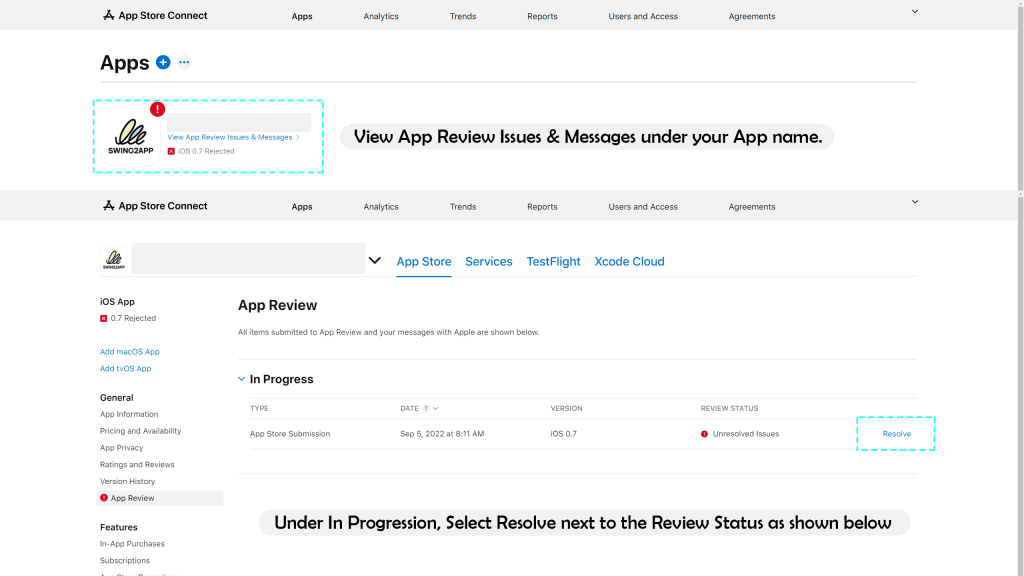
3. Under In Progression, Select Resolve next to the Review Status as shown below
4. At the left bottom, select Reply to App Review and Fill the necessary details in the Reply Field.
5. A file/document can also be added by selecting ATTACH FILE with your reply.
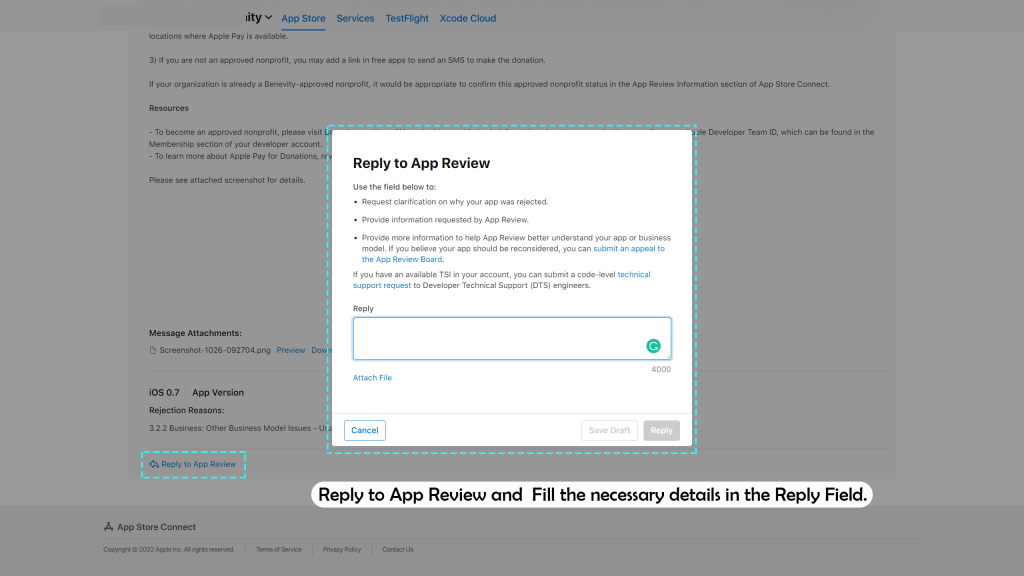
6. Go through all the filled details once and hit REPLY
Why my app was rejected by Appstore?
There are several reasons why your app may face Appstore rejection. However, the major reasons that we come across are that the app violates certain Appstore guidelines which as mentioned below.
1. Guideline 5.2.3 Legal: Intellectual Property – Audio/Video Downloading
You may have included content or features in your app that violate the rights of one or more third parties. As a result, you are potentially allowing unauthorized access to a third-party audio or video streaming service, a catalogue, or a discovery service. You should not infringe on the rights of others with your app or its contents. Any claims made against Apple because of an app that infringes another party’s rights are your responsibility.
Next Steps
To resolve this issue, please upload evidence proving that you are authorized to use the third-party audio or video streaming, cataloguing, and discovery services in your app in the Appstore Review Information section in App Store Connect. Unless otherwise stated, you acknowledge that submitting falsified or fraudulent documentation may result in your Apple Developer Program account being terminated and your apps being removed from the App Store by following the 3.2(f) part of the Apple Developer Program License Agreement.
For this, you will have to make an appeal to the Appstore review team. Apple will require documentation of your app’s broadcast license if you receive this kind of rejection. Attach your documents as a PDF or similar format; by clicking the “Attach File” link below the reply box.
2. Guideline 4.2.6/ Guideline 5.2.1 Standard practice of Apple for template-based apps:
Guideline 4.2.5 – Design – Commercialized Templates and App Generation Services
In this case, your app appears to be created from an app creation service or a commercial template and was not submitted by the owner or provider of the content within the app directly.
Guideline 5.2.1 – Legal – Intellectual Property
Your app was created from a commercialized template but was not directly submitted by the owner of the business, brand, or service.
Next Steps
Apps produced for businesses or organizations must be submitted under their own Apple Developer Program account in order to resolve this issue. If you own the business or organization the app is designed for, you may provide documentation. A copy of your rights to incorporate third-party content into your app is not sufficient documentation.
In the event that you receive this kind of rejection, you will need to state that you are the station owner/content owner and provide any documentation you may have concerning your ownership of the station. Here also, you will have to make an appeal to the Appstore review team. Attach your documents by clicking the “Attach File” link below the reply box. Since this developer account belongs to you, the app, or the station’s network, your app is submitted under the correct account.
As we said earlier, there are several reasons for which your app may face Appstore rejection. Read more about the top reasons why your app could face Appstore rejection and how to avoid them.
How to reply to the Appstore Review Team
If you receive an email from Appstore review asking for some additional information about your apps intended audience like the following list. We have provided examples as suggestions for your reply to such questions, but please make sure the information is as per your app.
- What’s the purpose of your app?
Answer: To provide a mobile app for the readers of our blog, giving them access to our content, submit their content and develop a blogging community through the app.
- For whom or what intended entity is the app being designed?
Answer: The app is designed for our blog readers.
- What is the target audience for your app?
Answer: The intended audience is our website blog readers and other interested people.
- Does the app supports or includes or is specifically made for financial or a government entity?
Answer: No. (Write yes is your app involves any kind of governmental or financial entity.)
- Do you own or represent the publishing, media, or newspaper group?
Answer: I represent the blog for which the app was designed.
After an appeal to the Appstore review team is sent, Apple’s review team follows up quickly. Most of the time, they reply within a few days.
If you don’t understand – look up for other people’s experiences
You may not understand Apple’s specific reasons why your app faced Appstore rejection, even though Apple provides you with a specific reason via mail.
At times, Apple’s reasons can be vague or broad without being very specific. Whenever there’s uncertainty, seek help.
You can read & go through other people’s problems at Apple Appstore forum.
A lot of people have already documented their issues and solutions to similar problems. If you research the rejection reason, you’ll come across a host of problem/solution posts.
Conclusion
It can be difficult to work with Apple sometimes. Having published more than 1000 apps to the App Store, we should know. We make it easy for you to create apps – from your existing website using the Swing2App website to app converter. Both Android and iOS apps are developed for WordPress sites, eCommerce stores, and other websites too.
You can get great apps on both Appstore and Playstore within a few weeks for a fraction of the cost.
Even better, you don’t have to worry about Apple or the approval process. All apps we prepare are 100% ready for Apple’s App Store and Google Play, and we submit them for you (under your own developer account). In case of a problem, we work directly with Apple or Google to resolve it as well as provide you with 24/7 support.
With Swing2App you won’t have to worry about Appstore rejection!
]]>You probably heard that Apple’s App Store is rather picky when it comes to accepting apps. Apple does indeed make it much more difficult to publish apps than Google. However, that doesn’t mean it’s impossible. You will need patience and, if possible, expert advice.

You need a developer license for both the App Store and Play Store. Play Store licenses are relatively inexpensive ($25) and last forever, but Apple licenses are more expensive ($99), must be renewed every year, and have a more complicated upload process. You should start with the Play Store, test the app with some users in the production environment, then move to the App Store once everything is ready.
In this post, we’ll assume you’ve already signed up for the Apple Developer Program, that your app follows Apple’s App Review and Human Interface Guidelines, and that you’re ready to ship. It incorporates information from the most recent version of XCode and offers context from Apple’s own documentation.
Are you worried about your app being rejected? Then this article is for you.
Read more to find out how to submit your app to the App Store.
Prerequisites
- A project that is ready for submission and passes Apple’s App Store Guidelines
- Valid Apple developer program account (not the Apple Developer Enterprise Program)
- A computer that runs Mac OS X
- Xcode 13 installed.
- Keychain Access
- Minimum SDK
- Online group event in-app purchases (new)
- Account deletion within apps (new)
How to submit your app to the App store
1. Create an app store account
Sign up for the Apple Developer Program
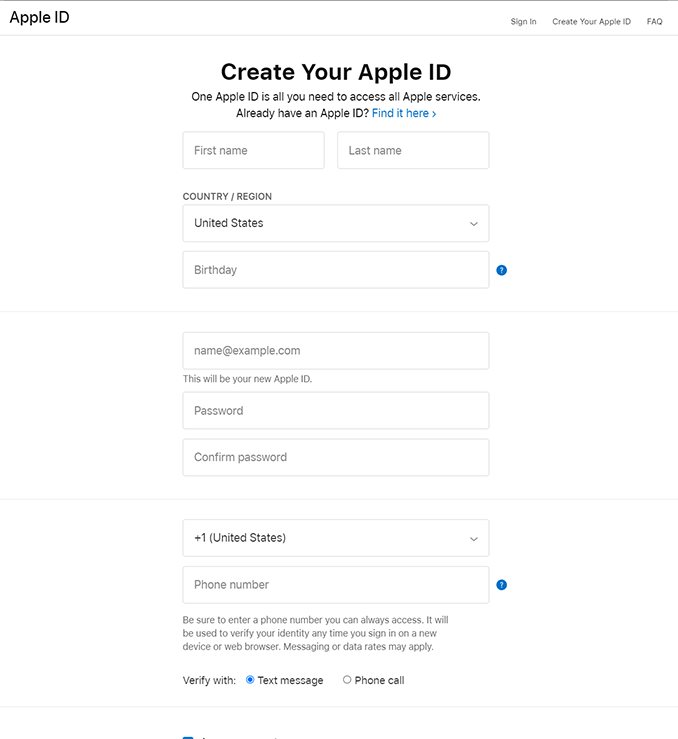

After your Apple Developer Program Enrollment is completed, you will be able to access developer resources from the Apple Developer Portal. Here you will need to create a few items:
Distribution certificate: This certificate that identifies your team and allows you to submit apps to the App Store.
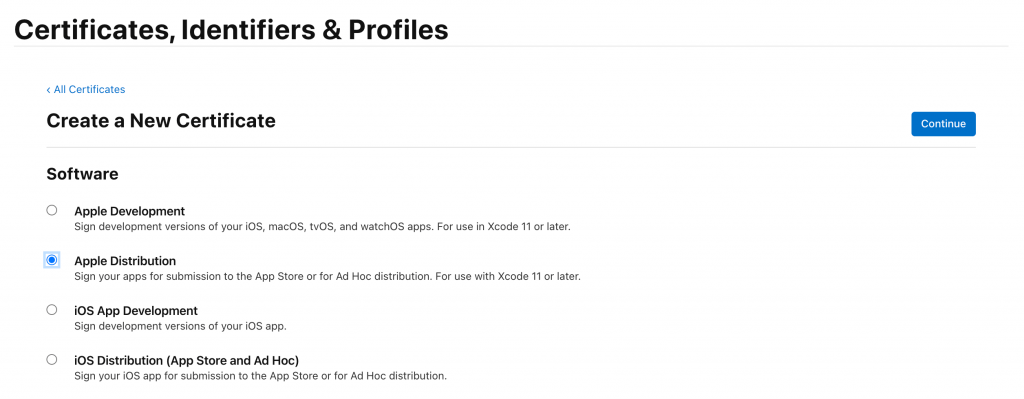
App ID: This is the identifier of your app. The Bundle ID must match the bundle identifier in your app binaries. When you create the App ID manually, you will see a list of features your app can add (like Push Notifications, Sign in with Apple, etc.). If you wish, you can configure those features later.
Provisioning profile: Only apps signed by the Apple can be installed on an iOS device. This becomes an issue for developers, because you will likely want to test the app on a real device before submitting the app for review. This problem can be solved by provisioning profiles. Provisioning profiles are embedded in your app binaries and let the app run before Apple signs it. Every app needs its own provisioning profile.
2. Create an App Store Connect for your app

Having created the items in the Apple Developer Portal as described above, we can move on to App Store Connect (Formerly iTunes Connect), the platform where applications are actually uploaded.
GET AN APP STORE CONNECT ACCOUNT BY:
- Setting up your own App Store Connect organization and being the team agent. Use the Apple ID you registered with when you enrolled in the Apple Developer Program.
- Alternatively, becoming a member of an existing organization as an admin, technical, or app manager.
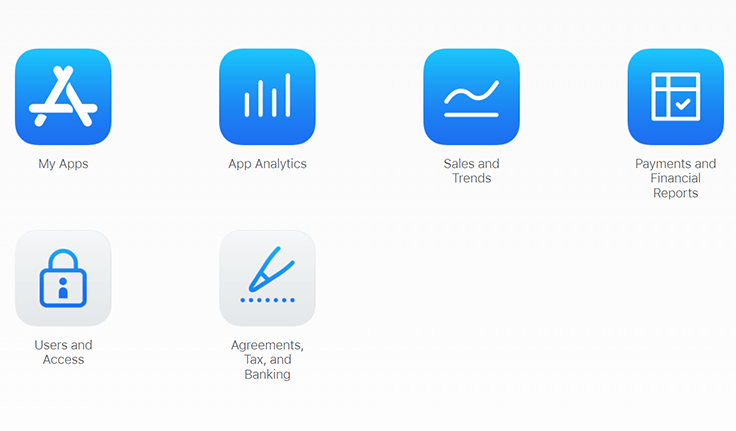
For paid apps :
If you are submitting a paid app, you will need to sign a contract that covers the terms of payment. If your app is free, you can skip ahead.
Add a new app :
Select My Apps from the App Store Connect dashboard.
On the upper-left corner, click the + sign, then select New App.
The following details are required to create an App Store Connect record: platform, app name, default language, bundle ID, and SKU. You can’t change these details later, so be careful of what you enter.
Use keywords in your app name for App Store optimization.
Your Xcode project’s Info. List file must match the bundle ID in the target’s General > Identity section.
It is up to you to set the SKU, and it is not visible to users. It can be an identifier for your company or something else meaningful to you. It must begin with a letter or number, and be a combination of letters, numbers, hyphens, periods, and underscores.
If applicable, you can also set user access at this step.


3. Configure the app’s metadata and other details in its App Store Connect record
In the “App Store” Tab in App Store Connect, on the “App Information” section you can add other languages, categories, and your app’s Privacy Policy URL.
Step1
Select App Information from the left panel. Now add the required, localizable, and editable properties for your app including subtitle and category.
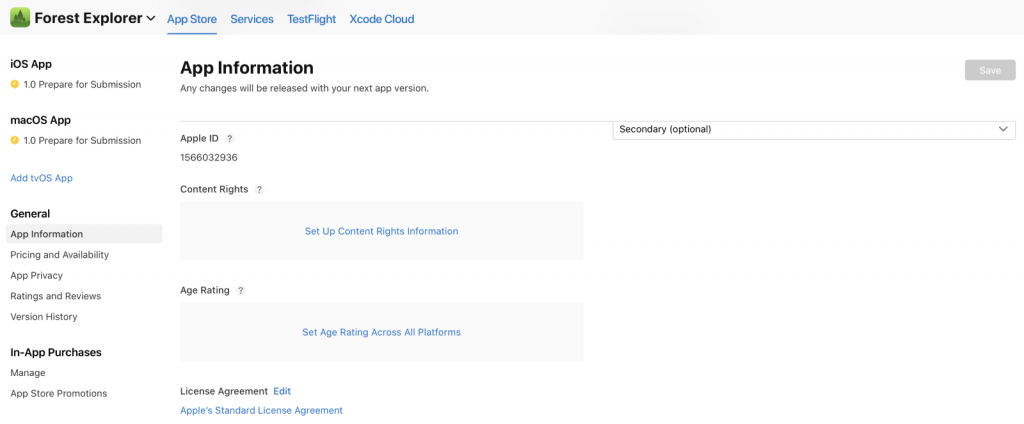
Select content rights for your app to submit your app to the app store.

Select Age Rating for your app

Step 2
In the “Pricing and Availability” section, select your app as free or set its prices.
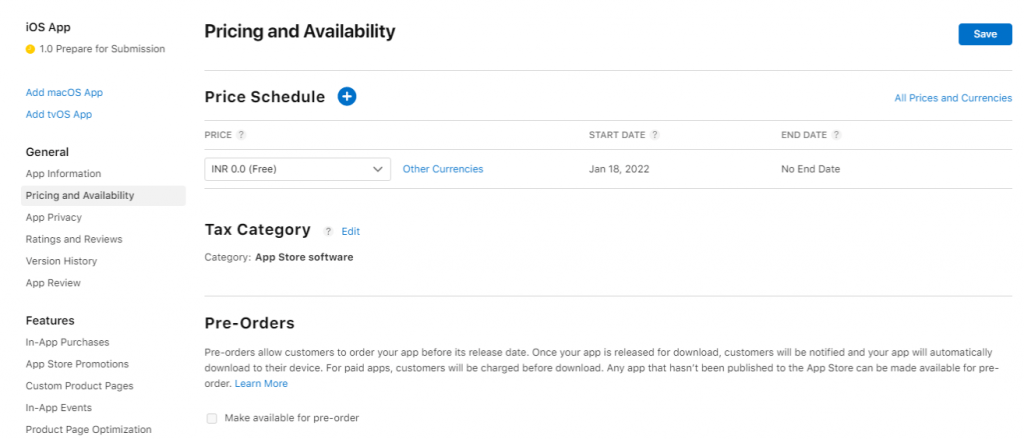
You can add further configurations in your app under the “Features” tab, like Game Center and in-app purchases.
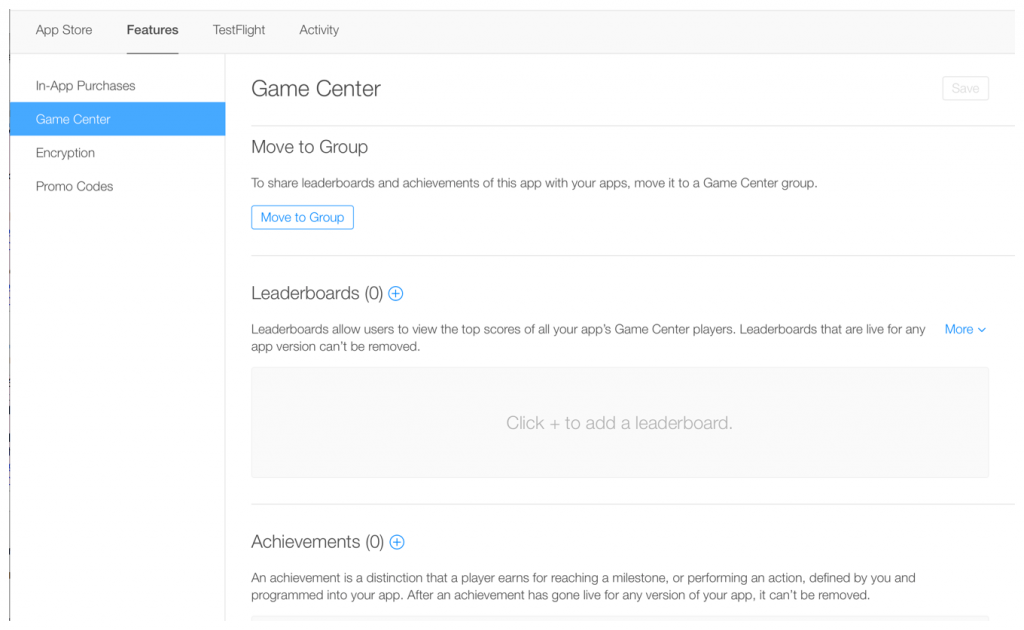
Step 3
The next step is “App Privacy.” As Apple has an extremely strict privacy policy this step is quite important. Enter the Privacy Policy URL for your app. You can use any online privacy policy generator to help you to generate a URL.

Step 4
Add the information of your app for your “product page” on the App Store.
Upload your app’s screenshots only in either JPEG or PNG format and without any status bars. You can upload multiple screenshots for one device and use them for all the other sizes (like iPad pro or mini).
Click on “Save” after your screenshots have finished uploading.
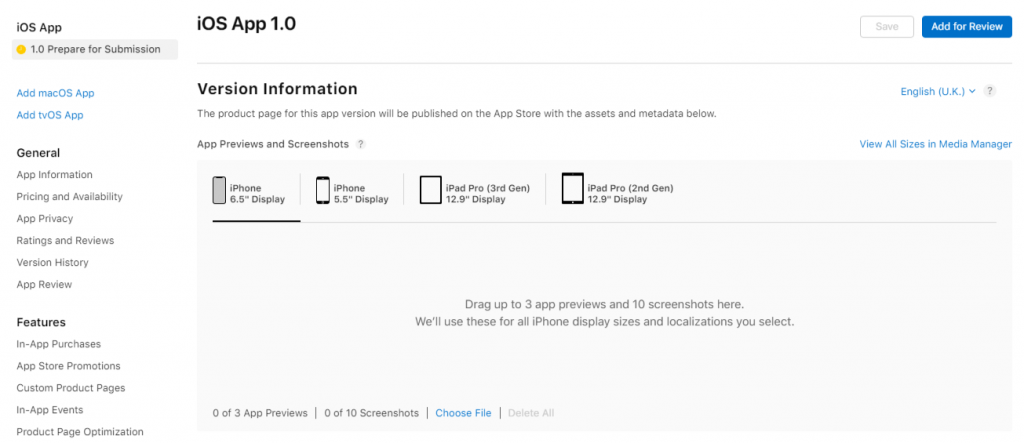
Scroll down a little and enter other details of your app like: app’s description, keywords, support URL, and marketing URL.
In the “General App Information,” upload your app’s icon, and enter its version number, copyright, and contact information.
- There are curtail guidelines that you must follow:
- App icon size should be 1024px x 1024px.
- The version number should exactly match the one in Xcode of your app.
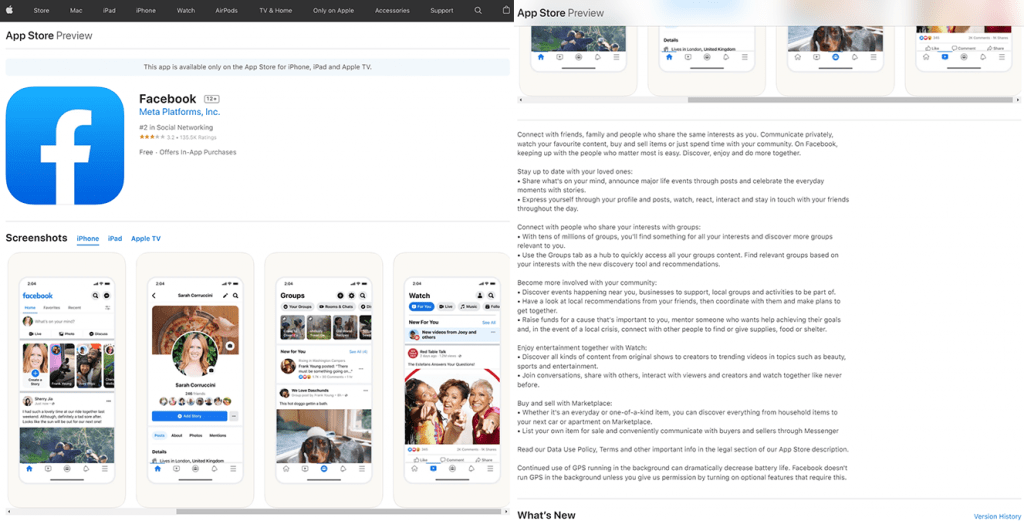
Step 5
Click on Edit next to “Rating” and select the options for your app. Fill this honestly — your app can be rejected during the review if this doesn’t match its rating.
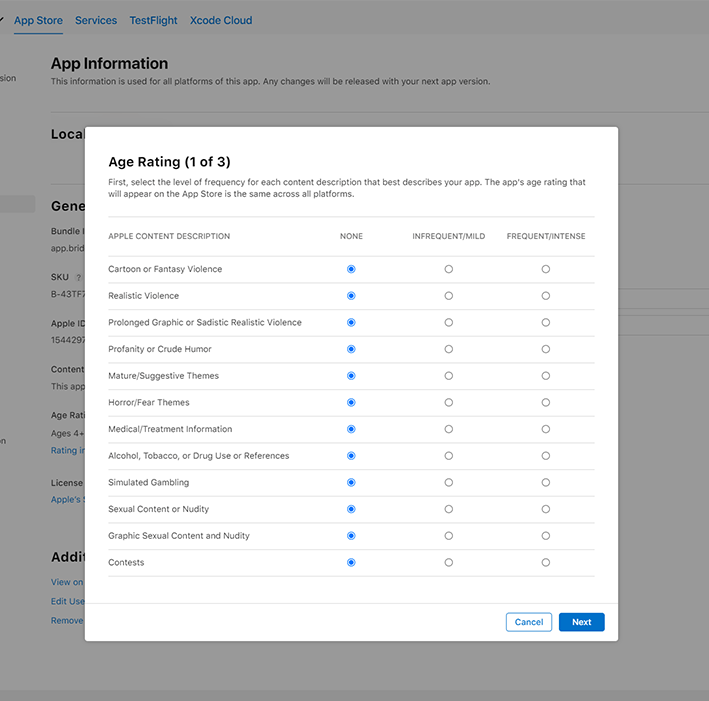
In the “App Review Information” page, enter your contact information, and any key notes you have for the reviewer and set the version release date.
The contact information here is not for users, rather for the reviewer if they need to reach you directly.
For first releases, you should typically set the version release date as automatic.
Finally, click “Save.” Now you are almost ready to “Submit for Review.”
4. Submit your app for review
Go to the “Build” option in your app’s App Store Connect data.

Click on the option “Select a build before you submit your app.”
Select the build that you uploaded through the Xcode. Click “Done” in the bottom right-hand corner, then Save in the top-right hand corner, then Submit for Review.

Finally, submit the Export Compliance, Advertising Identifier questions and Content Rights and click Submit.
Your app’s status should be “Waiting for Review.”
5. Check on the status of your app
In App Store Connect, select the option “Activity in the top horizontal menu, then the option “App Store Versions.”
You can view the various steps and a specific colour before it indicating:
- Red means rejection
- Yellow means under review
- Green means ready for publishing
How long does it take to get app store approval?
Typically, it takes one to three days to receive approval, further it can take up to 24 hours or so for your app to appear in the App Store once approved.
You’ll be notified of each step via e-mail.
Alternatively, if you have an urgent bug fix or need to release your release after a specific event, you can request an expedited review also.
What to do if Appstore rejects your app?
Before your app can be reviewed again, you’ll need to make the necessary changes. If you have any questions, you can contact Apple through the Resolution Center in App Store Connect. Alternatively, if you believe that your application was wrongly rejected, you can escalate the issue and submit an appeal.
Performance is one of the most common reasons for rejection in the Apple App Store. Ensure that your app is complete and that you have thoroughly tested it and fixed all bugs. When beta testing, using a bug reporting tool will reduce your app’s chances of being rejected due to performance issues.
Also read about: Reasons Why Your App Can Get Rejected By Google Play Store
Or use Swing2App instead
You know that submitting your app to the app store is a tedious task, but what if you could skip it completely and still have your app published on the App Store?
Well, this can be done easily with Swing2App!
Though we have covered in detailed steps for how to submit your app to the App store, it would be much easier if you do it using Swing2App.
Create no-code app with Swing2App and leave the job of publishing your app on the Appstore to us.
It is an effortless process:
- Create no-code app using Swing2App
- Buy any plan of your choice (starting from$33) and a $20 AppStore upload ticket. This means you can create as well as upload your iOS app in just $53!
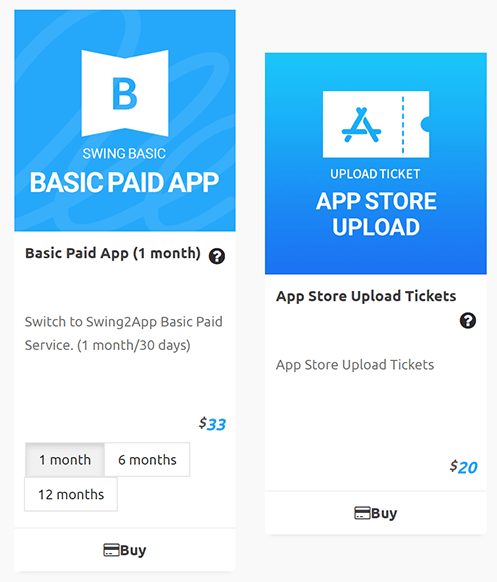
- Swing2App will upload the app on your behalf, and you can sit back and relax.
Moreover, you don’t need to worry about app rejection too, as we will handle that too.
In addition to that, you also get lifetime support from Swing2App.
So, why spend many hours worrying about app rejection when you can just leave everything to Swing2App?
]]>Nowadays you will find everyone is using one or another kind of app in their smartphones. We have an app for everything be it entertainment, communication, food, music, sports, calendar and much more.
So, app developers are increasing day by day, the competition is increasing, so you need to make a top-quality app, otherwise you might lose your customers.
However creating even a basic app can cost you a lot if you hire a software development company or even a freelancer.
An app builder like Swing2app App Maker makes your life easier and reduces app development cost by providing you with a variety of free features, design templates, and other free app options. In addition to that it is a codeless app developer. You just need to add your required features to build an app. You can also analyse the statistics of your app using the analytics tool, all these features will definitely save your cost of developing an app.
So, if you want to create a cost as well as quality efficient app , just go to Swing2app. Swing2app is surely a free app developer, that means all features to create your app are free, but to publish your app you need to switch to paid version.
Swing2app provides lots of paid plans, for different developers requirement, by which they can create their dream app without incurring huge costs.
Let’s explore the various plans.
1.FREE VERSION
Swing2App is free for both app production and app operation. Therefore, users can use all the features for free without any restrictions.
The free version of the app created with Swing2App can only be downloaded and installed only on Android phones.
2.FREE COMMERCIAL VERSION
Best for: Those who want create and upload a basic app on Play store for free.
The free commercial version of Swing2App is the service that allows you to release a free app on the Play Store without having to pay for vouchers. It can be released on the Play Store but not in App Store.
So, if you want to release the app to the Play Store but are burdened by cost issues, you can apply for a free version app and use it freely. Apps created with the free commercial version can be used without restrictions, and Swing2App’s own ads will be displayed.
MAJOR DIFFERENCES BETWEEN PAID & FREE VERSION
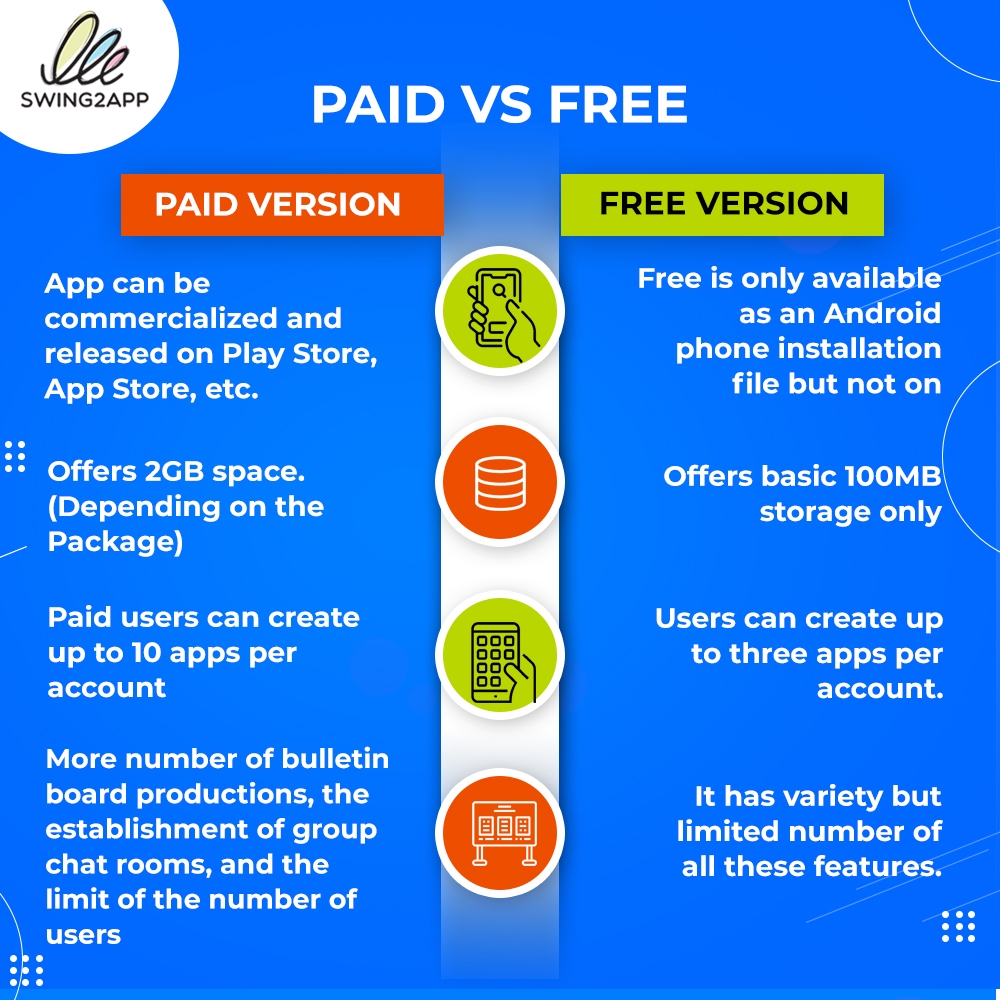
Swing2app provides paid packages under 4 categories on their online store:
- Voucher & Plans
- Tickets
- Swing2app plugins
- Swing2app packages
Let’s explore these paid packages.
1.Voucher & Plans
Users need to buy Vouchers when they want to upload the app on the app store/google play store, that they created using swing2app. Vouchers prices vary according to the duration.
Basic($33/month), Expandable($55/month) & Premium($100/month) packages may be chosen for 1 month, 6 months or 12 month as per the users need.
When you pay for any of the package, you get certain additional features, depending upon the package you choose along with the app commercialization.
It also includes a Budget Package which is specially made for long term users, it has all the features of Basic plan and you don’t need to purchase store upload ticket separately. It is for $330/24 months, which saves 50% of the users money if he opts for Basic plan for the same duration.
If you want to purchase additional storage for your app, you can buy Add Storage voucher from 2GB to 100GB per month, depending upon your need.
| ADDITIONAL STORAGE | PRICE/MONTH |
| 2GB | $11 |
| 5GB | $22 |
| 10GB | $44 |
| 30GB | $66 |
| 50GB | $88 |
| 100GB | $110 |
All the vouchers are applicable for only 1 application.
2.Swing2app Ticket
Swing2app Tickets are one time product, that means you have to purchase them only once for a single app. These are mainly for those users who want to upload their app to the app store & play store, without creating a developers account. Users can also purchase additional storage ticket if they need more storage than the voucher provides.
To upload your app on store purchasing other vouchers, either you need to create Appstore Developer Account ($99/year) for app store and Google Developer Account($25 one time) for google Playstore.
If you buy Swing2app App Store upload Ticket, you don’t need to create the Apple Developer Account. However, the same is not the case for Google Playstore upload ticket, where you still need to create a developer account worth $25(one time).Swing2app provides only Appstore developer account and not the Google Playstore developer account.
But if you don’t want to spend &99 annually on appstore developer account, due to any reason like you are creating only one app and don’t want to spend much. Swing2app provides store upload tickets for such users, it is quite cost efficient, for uploading 1 app:
1. On Playstore: buy Playstore upload ticket $5 only
2. On Appstore: buy Appsore upload ticket $20 only
Mobile web registration ticket ($20/month) for those who want to register their app as a website & they do not have a website. But you need to purchase either Expandable or Premium Package first as well as a domain separately and Swing2app will register your app as a website.
Swing2app also provides a package for those who want to send SMS texts to their users namely 1000 SMS Messages Package. This ticket can be used to send phone number verification and text messages to app members. We offer 1,000 SMS for $20. If you need to purchase more SMS, you can increase the number of SMS you want at checkout. These SMS can be used to Sign Up: Set up your phone number ID and send text messages to app members.
3.Swing2app Plugins
Swing2App plug-in products are optional products that include custom development by the development team, not regular paid products. They have certain additional features like monetizing your app using google AdMob which are not provided in other vouchers.
These are the lifetime deals, you need to buy these only once and just enjoy the benefits.
Plug-In with Google AdMob ($220): This product allows you to set AdMob ads on an app produced by Swing2app.This product is best for those who want to monetize their apps by allowing google ads on their app & getting direct 100% revenue.
WebView Lifetime Paid App: It is for those who already have a website & want to convert it to an app. Unlimited web view paid apps are available only for apps created in the Swing2app using WebView prototype.
You can use the app for unlimited without paying monthly fees.You can also apply the iPhone and Android integrated application, and if you use only the platform you want. You can also release your app on the Play Store and App Store.This plug-in is beneficial if you are planning a long term app use.
The prices vary according to the availability of iphone, android or both in-app integration:
WebView Lifetime Paid App(Android+iPhone) $300
WebView Lifetime Paid App(iPhone) $230
WebView Lifetime Paid App(Android) $99
Push-only Lifetime (Android + iPhone)($550): This plug-in is only for those who want to create a push only web app.
Push app is a web app prototype, provided by Swing2app, in this your website is converted to an app looking exactly same as your website, and can send push messages to users who have installed the app.It is an integrated application for Android + iPhone, and you can use the app without paying monthly fees.
Push can be sent an unlimited number of times without any restrictions on the number of members or sending. You can also release your app on the Play Store and App Store after purchasing the store upload ticket. This plug-in is beneficial if you are planning a long term app use.
3.Swing2app Packages
Swing2app Packages are specially designed for the users who are planning to use their app for long term & also want the additional feature like additional storage, Admob plug-ins, etc.
These packages provide huge discount to the user as compared to buying all them separately for shorter duration.
Admob power Package($580/2 years): Admob Power Package is a product that consists of a Swing2App Basic Package for 2 years + Admob ad plugin setting product as a package, along with store upload tickets of both appstore & Playstore and is a product that can be used in a package at a lower cost than purchasing separately.
It is recommended if you are planning to use the app for a long time along with the Admob advertisements.
Large Package($500/1 year): Large Package is a product that consists of a Swing2App Basic Package for 1 year + 30GB additional storage, along with store upload tickets of both appstore & Playstore and is a product that can be used in a package at a lower cost than purchasing separately.
Large package products are recommended when you need to use a lot of app storage.
Let’s look in detail.
1.BASIC PLAN
$33/MONTH
You get:
- Unlimited traffic – It allows unlimited new monthly user. New user means a new device on which your app is installed & every device has different id, to keep a check on traffic.
- App commercialization (Store available)-You can upload your app on the appstore and playstore.
- Send Unlimited Push-you can send unlimited push notifications to your mobile app users.
- 2GB storage capacity
- Unlimited posts-You can create unlimited posts, in which you can write, insert images, videos and links as well
- 100 Bulletin Boards (5 Chat rooms) -These 5 chat rooms help you in connecting 20 people.
- You can install shopping mall module- It’s a shop feature if someone wants to make e-commerce app, so adding items, payment, delivery details, schedules, etc are done in that
- In your app you can link 1 PAYMENT GATEWAY Company
2.EXPANDABLE
$55/MONTH
In addition to the Basic Plan you get:
- 10GB storage capacity
- 300 Bulletin Boards (10 Chat rooms) connecting 100 people
- Link with multiple PAYMENT GATEWAY
- Paid customization applicable
3.PREMIUM
$100/MONTH
In addition to the Basic Plan you get:
- 50GB storage capacity
- Unlimited Bulletin Boards
- Free Store Registration Agency
- Infinite Store upload tickets
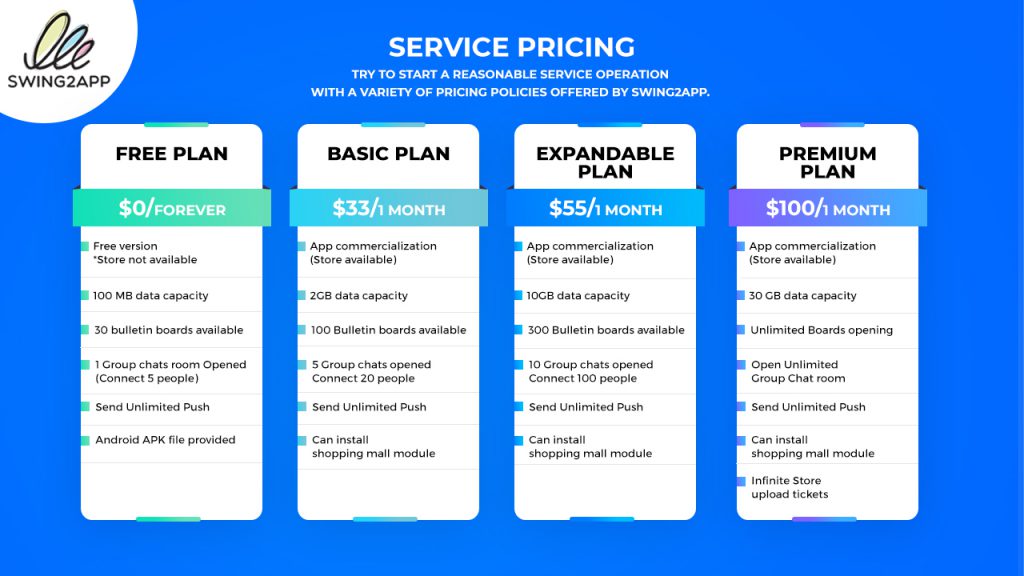
SWING2APP PACKAGE PRODUCT PRICING
1.SWING2APP BUDGET PACKAGE
$330/2 YEARS
Best for: small business owners who want to create an app but don’t have much capital to invest.
- There is a 58% off on the price of the monthly basic product. Basic plan is $33 per month, which is $792/2years, but in this budget pack you get all the basic plan features at a much-reduced price.
- App commercialization (store available) – You can publish your app & commercialize it.
- App Store Upload ticket + Play Store Upload ticket – You don’t need to buy store upload tickets separately.
- Send Unlimited Push
- You can install shopping mall module -It’s a shop feature if someone wants to make e-commerce app, so adding items, payment, delivery details, schedules, etc are done in that
- 50 bulletin boards can be opened-Bulletin boards provide various features like: chat, map board, surveys, calendar, 1:1 chat and much more.
- You can open 4 group chat rooms & get 10 people connected.
- 500 MB Data storage
2.ADMOB POWER PACKAGE
$580/2YEARS
Best for: the developers who run a monetized app, like game apps monetize their app by allowing in-app advertising.
- Offer 245$ discount over individual purchases $825 →$580
- 2-year subscription of Swing2App basic paid app
- App Store Upload ticket + Play Store Upload ticket
- Send Unlimited Push
- Can install shopping mall module
- AdMob application plug-in (Android + iPhone settings)- You can add google ads to monetize your apps.
- App commercialization + Store available
3. LARGE PACKAGE
$550/YEAR
Best for: when you need to use a lot of app capacity
- Offer 557$ discount over individual purchases $1,107 → $550
- 1-year subscription of Swing2App basic paid app
- App Store Upload ticket + Play Store Upload ticket
- Send Unlimited Push
- Can install shopping mall module
- 30 GB additional storage
- App commercialization+Store available
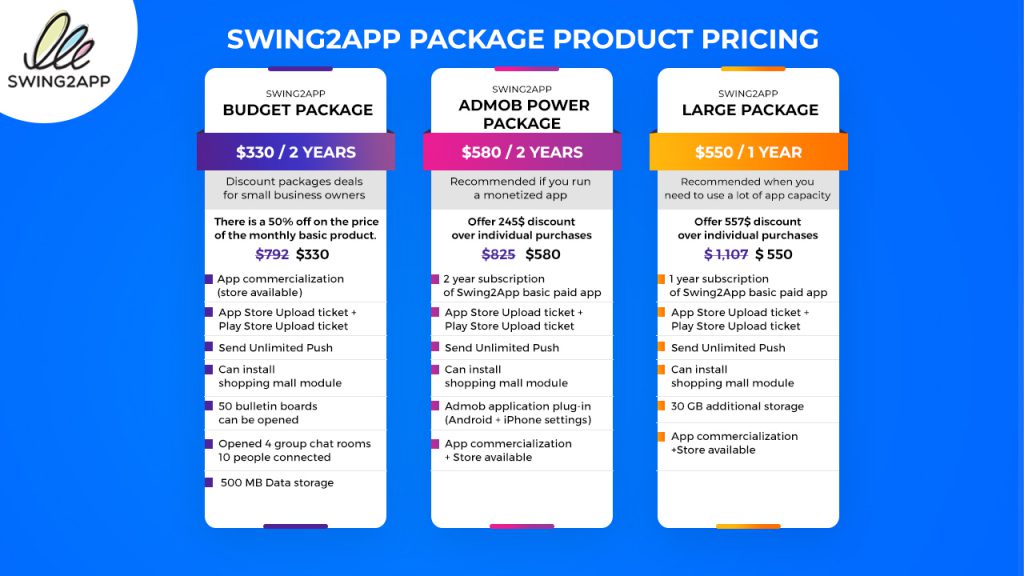
SWING2APP PLUG-IN PRODUCT PRICING (LIFETIME PLANS)
The main advantage of lifetime plan is that you don’t need to buy monthly vouchers.
1. UNLIMITED WEB VIEW PLUG-IN
$300
Best for: developers/businesses who want to create web view app only from their pre-existing website & intend to use it for a long time.
- No need to buy a monthly ticket
- Unlimited Usage Period
- Unlimited paid products
- App commercialization (store available)
2.ADMOB APPLIED PLUGIN
$220
Best for: the developers who run a monetized app. Swing2app Provides Custom product that can put Google Admob ads in your app & intend to use it for a long time.
- Admob application can only be applied to paid version apps that paid for app licenses
- Android Phone + iPhone Integrated settings
3.PUSHONLY LIFETIME PAID APP ( Android + iPhone )
$550
Best for: the developers who want to make Push only web app & also want to send unlimited push notifications to their users.
The Push Only app is a web app style created by attaching a website to the app, and push sending is unlimited. This is only applicable for Push Only prototype of Swing2app.
4. CUSTOMIZE APP DEVELOPMENT
Best for: Developers who are interested in further details & want to create their app with the help of App Creation Agency and App Development & intend to use it for a long time.
- 1:1 custom app created
- Post-development of responsible engineer
- Detailed quotation after consultation
If you need an app development and app customization, you can send your app plan to help@swing2app.com
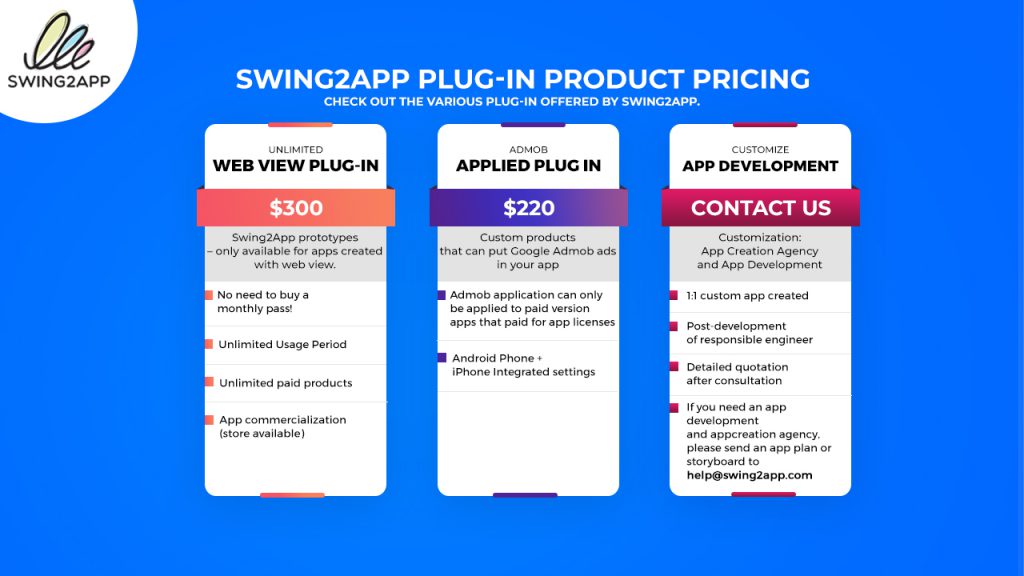
Different price packages for different time duration:
| SWING2APP PLANS & PACKAGES | 1 MONTH | 6 MONTHS | 12 MONTHS | 24 MONTHS |
| BASIC PAID APP | $33 | $160 ( ↓ 19% $38 saving ) | $290 ( ↓ 26% $106 saving ) | |
| EXPANDABLE PAID APP | $55 | $260 ( ↓ 21% $70 saving ) | $460 ( ↓ 30% $200 saving ) | |
| PREMIUM PAID APP | $100 | $480 ( ↓ 20% $120 saving ) | $840 ( ↓ 30% $360 saving ) | |
| BUDGET PACKAGE | $330 ( ↓ 58% $462 saving ) | |||
| ADMOB POWER PACKAGE | $580 ( ↓ 30% $245 saving ) | |||
| LARGE STORAGE PACKAGES | $550 ( ↓ 50% $557 saving ) |
Different price packages for different Lifetime Plans $ Tickets:
| LIFETIME PLANS / TICKETS | PRICE |
| PLUG-IN WITH GOOGLE ADMOB | $220 |
| WEBVIEW LIFETIME PAID APP (Android +iPhone) | $300 |
| WEBVIEW LIFETIME PAID APP (Android) | $99 |
| WEBVIEW LIFETIME PAID APP (iPhone) | $230 |
| PUSH ONLY LIFETIME PAID APP (Android +iPhone) | $550 |
| PLAYSTORE UPLOAD TICKET | $5 |
| APPSTORE UPLOAD TICKET | $20 |
| MOBILE WEB REGISTERATION TICKET | $20 |
| 1000 SMS PACK | $20/month |
HOW TO PURCHASE THESE PACKAGES?
You can purchase any plan as per your choice, after creating your app, on Manager page, Go to the Online Store & then choose, Vouchers & Tickets or Swing2app Plugins or Swing2app Packages, according to the plan you want to purchase.
You will be taken to that page where you can select the package and duration and simply buy it.
To know more about how to buy & use Swing2app paid packages refer these links:
Wondering which one should you choose?
Swing2app ensures to meet the demand of each type of developer with its variety of prices.
Let’s see what you should choose, depending upon your case.
Pricing Examples:
Swing2app paid products fall under two categories either the payment is paid on basis of duration(1 month, 6 months, 1 year, 2 years) or the payment is just for once as in lifetime products.
Following are some pricing examples, while reading keep in mind that some prices are term based and some are to be paid only once.
| Pricing Example 1 – User wants to create an app that requires 8GB storage, 208 bulletin board, 6 chat rooms and wants to upload app on app store only. |
| EXPANDABLE PLAN ($55*12=$660 – 30% discount (12 month/360 days)= $460) |
| To upload on Appstore: buy APPSTORE UPLOAD TICKET $20 only |
| First Year Total = $480/YEAR ($20/onetime, $460/year) Next Year & Onwards Total = $460/YEAR |
| Pricing Example 2 – User wants to create an app that needs 3.5GB space, 80 bulletin board, 2 chat rooms and wants to upload on app store and play store. |
| BASIC PACKAGE ($290/year) |
| PLAYSTORE UPLOAD TICKET $5 only |
| GOOGLE DEVELOPER ACCOUNT $25 lifetime |
| APPSTORE UPLOAD TICKET $20 only |
| ADD 2GB STORAGE ($11/month -> 1 year = $11*12 = $132) |
| First Year Total = $472/YEAR ($20+$5/onetime + $25 lifetime + $290/year + $11/month*12) Next Year & Onwards Total = $422/YEAR(290+132 ) |
| *Google charges a one-time $25 fee to get a developer account on Google Play, which lets you publish Android apps. Free apps are distributed at no cost, and Google takes 30% of the revenues of paid apps for “carriers and billing settlement fees”. |
Pricing Example 3 – User wants to create an app using web view prototype and already has a website, and is willing to use this app in lifetime. |
| WEBVIEW LIFETIME PAID APP (Android + iPhone) $300 |
| Total= $300 for lifetime (onetime) |
| Pricing Example 4 – If you want to make app without website (normal prototype),with 1GB storage only & is also looking for discount. |
| BASIC plan worth $33/MONTH or SWING2APP BUDGET PACKAGE $330/2 YEARS, by which you can save $330 for 2 years. |
| Total = $33/MONTH or $330/2YEARS |
| Pricing Example 5 – User wants to upload on Google Playstore only by spending minimum. |
| BASIC plan worth $33/MONTH |
| PLAYSTORE TICKET $5 |
| GOOGLE DEVELOPER ACCOUNT $25 lifetime |
| First Month Total = $63/MONTH ($5 one time + $33/month + $25 lifetime) Next Month & Onwards Total = $33/MONTH |
| *Google charges a one-time $25 fee to get a developer account on Google Play, which lets you publish Android apps. Free apps are distributed at no cost, and Google takes 30% of the revenues of paid apps for “carriers and billing settlement fees”. |
| Pricing Example 6 – User wants to upload on Appstore only by spending minimum. |
| BASIC plan worth $33/MONTH |
| APPLE STORE TICKET $20 |
| First Month Total = $33/MONTH ($20 one time + $33/month) Next Month & Onwards Total = $33/MONTH |
| Pricing Example 7 – Users want to upload on both Appstore & Playstore, but wants to invest monthly. |
| BASIC PACKAGE worth $33/MONTH |
| PLAYSTORE TICKET $5 |
| GOOGLE PLAYSTORE DEVELOPER ACCOUNT $25 |
| APPLE STORE TICKET $20 |
| First Month Total = $83/MONTH ($5 one time + $20 onetime + $33/month + $25 lifetime) Next Month & Onwards Total = $33/MONTH |
| *Google charges a one-time $25 fee to get a developer account on Google Play, which lets you publish Android apps. Free apps are distributed at no cost, and Google takes 30% of the revenues of paid apps for “carriers and billing settlement fees”. |
For how many days of a 1 month pass is valid?
You may wonder if the total number of days spent on a paid app ticket per month is 30 days, 31 days, or if the payment date varies from month to month.
The total number of days varies from month to month (there are 28 days, 30 days, 31 days) so the number of days per month set by the swing is 30 days. Therefore, 180 days of use for 6 months, and 360 days for 12 months.
You may also think, if it is 365 days or not just for a year payment, but it applies to the number of days calculated as 30 days per month.
*Each plan is applicable on only 1 app, while purchasing choose carefully the app for which you want to purchase for.
Creating app is made so affordable for all types of developers.
There is no unreasonable price nor separate production cost to pay for the variety of features you get to use.
Create your own app and get started right away at a small cost.
]]>iOS 14 release date
Official release likely in September
Apple previewed iOS 14 during its online Worldwide Developers Conference(WWDC) in late June.
iOS 14 new features
These are the features that will come to compatible iPhones when iOS 14 launches later in 2020.
Let’s get started with widgets…
Widgets
Widgets have been a part of iOS from quite some time now, but have always been hidden in Today View. With the latest iOS 14, this will be more easily accessible via the home screen and you’ll be able to pin them onto any Home Screen page in different sizes. Widgets can be added when in edit mode and for most widgets, you can choose between 3 sizes. (Small, Medium, and Large.)
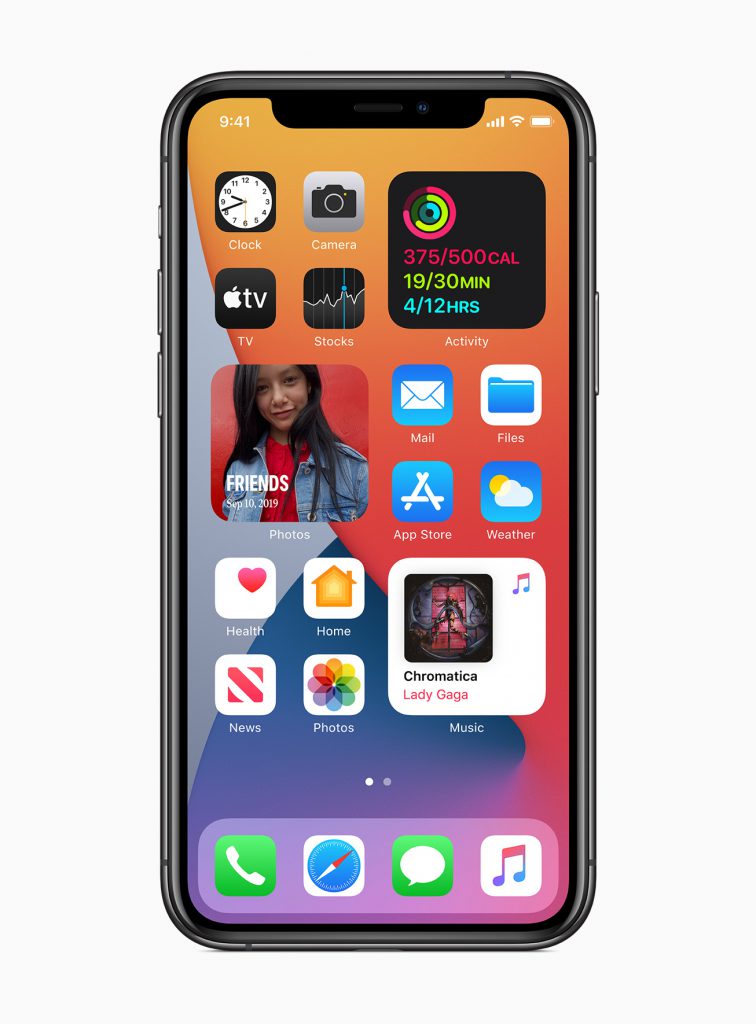
With the introduction of Smart Stack, users can create a stack of widgets that use on-device intelligence to give you the right widget based on time, location, and activity.
App Library
The App Library is positioned at the end of the Home Screen pages and it automatically organizes all of your apps into folders, such as Social or Recently Added, as well as Suggestions, showing you the apps that might be useful at that particular time. Now, you’ll be able to hide the pages to streamline your Home Screen. New apps downloaded from the App Store will automatically go into the App Library.
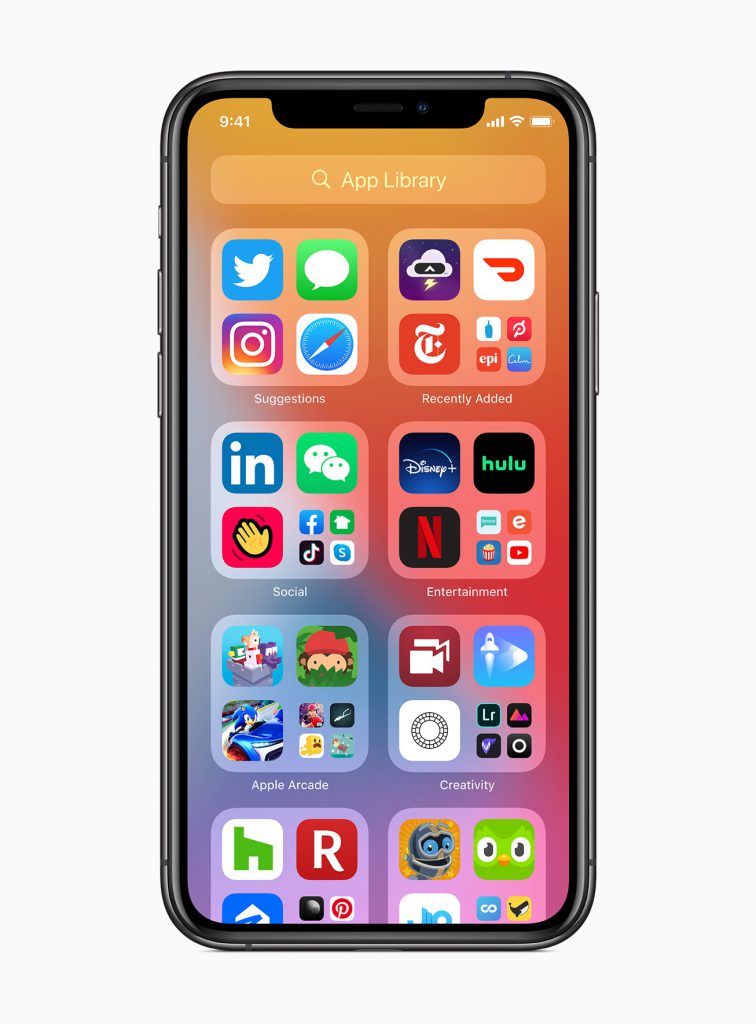
App Clip
App Clips are entirely a new kind of way to interact with your app. An App Clip is a small part of an app – under 10MB – associated with a particular product or business which is designed to be discovered as soon as it is needed. It will be able to be discovered easily and accessed by scanning a new Apple-designed App Clip code or through NFC tags and QR codes, and can also be accessed when shared in Messages or Safari.
Let’s say you’re trying to park and you don’t have the right app. A special App Clip QR code will let you download just the bit you need. No need to create an account as you can Sign In With Apple and pay via Apple Pay.
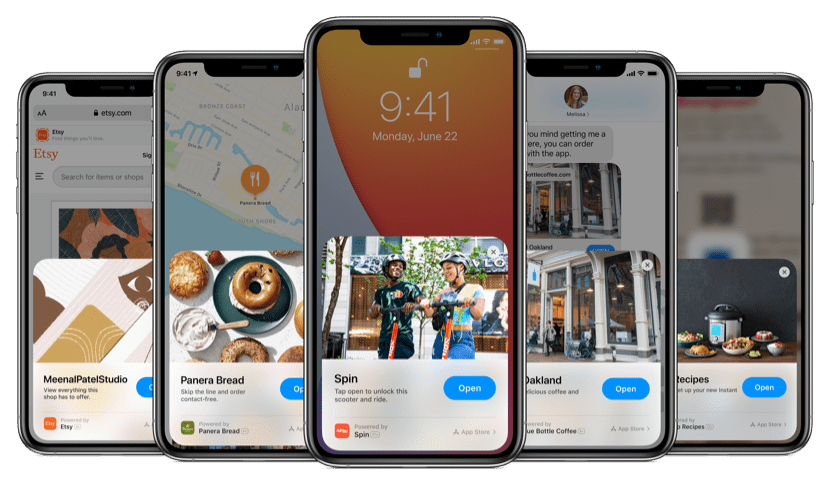
Messages
In iOS 14, users will be able to pin conversations to the top of their messages list. Mentions and inline replies are also being introduced in group threads and there will also be new Memoji options, as well as the option to set a group photo using an image or emoji. Users will be able to mute a group conversation but receive notifications when their name is directly mentioned.
Compact UI for Siri
Siri has over 20x more facts now compared to three years ago. With a redesign in iOS 14, talking to Siri will no longer mean she’ll take over the whole screen because when you will start a request, Siri pops up at the bottom of the screen.
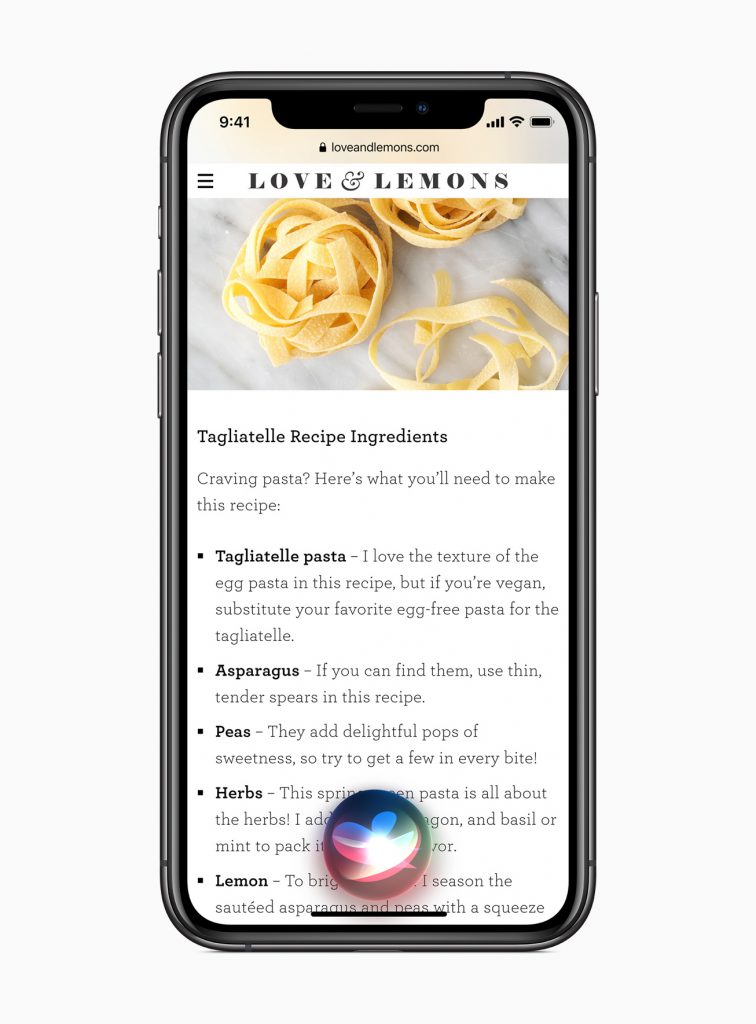
Compact Incoming Calls
When you’ll receive a call, it will appear as a banner instead of taking over the entire screen, so you won’t lose track of what you’re doing. To dismiss the call you just simply swipe up on the banner or swipe down to access extended phone features and tap to answer.
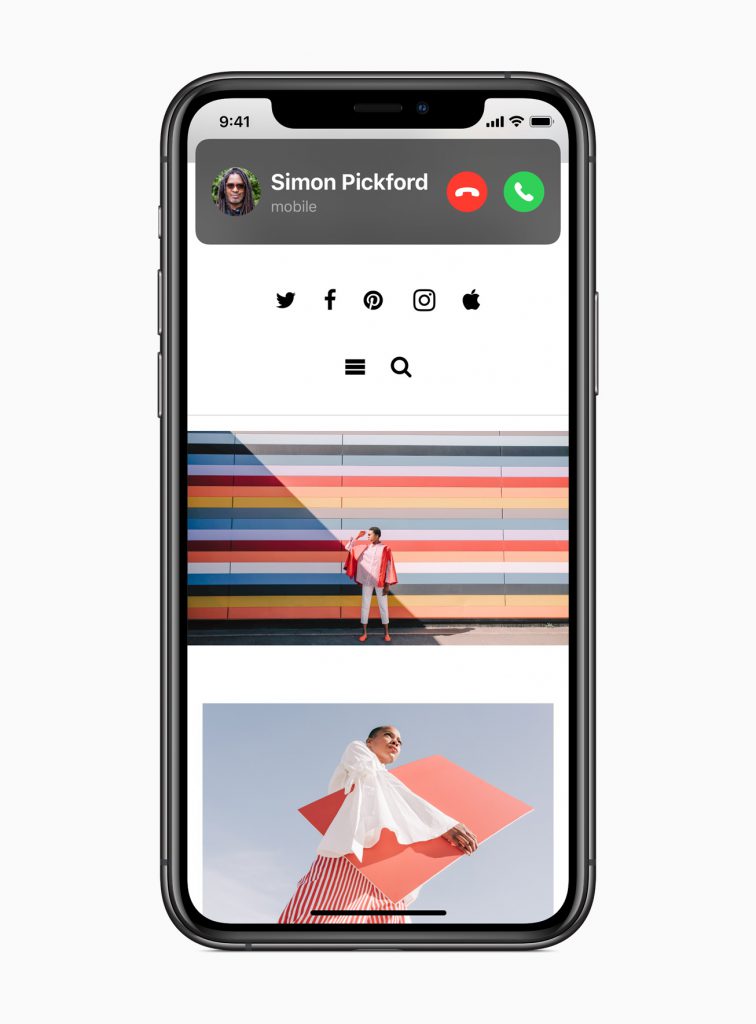
New Translate app
iOS 14 will launch a new Translate app. It will listen to speech and will auto-recognize what language is being spoken and will translate it onscreen before your eyes. It offers 11 languages and all is done offline, on-device.
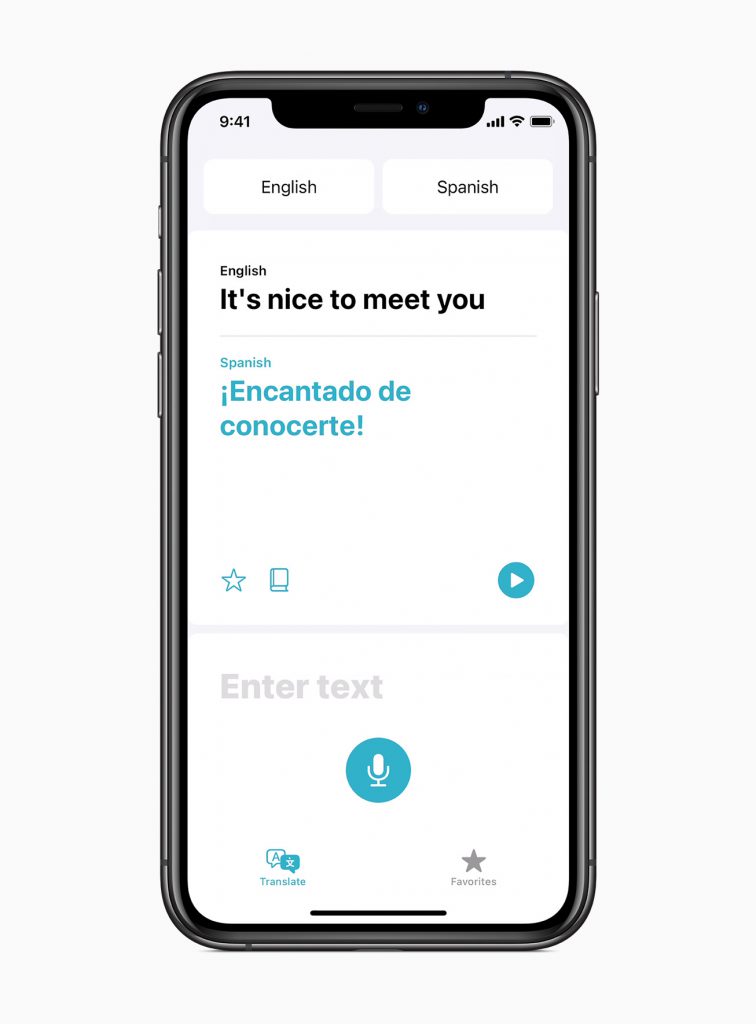
Maps
Maps will get cycling directions in iOS 14, along with electric vehicle routing and curated Guides. Cycling directions will show every detail like a preview of elevation so you know how hilly your route will be, how busy a street is, and whether there are stairs on the route that will require you to carry your bike but may save you time.
If you drive an electric car, the iOS 14 software will show charging stops automatically in maps. If you have an app for a supported electric vehicle on your iPhone, it can share some significant information like the current charge of your car battery, if the charging stations are free or paid, and what kind of charging connections are available.
Picture-in-Picture support
A brand new feature of Picture-in-Picture is added in iOS 14, allowing users to watch a video or take a FaceTime call while working on another app. Picture-in-picture shrinks the video into a small player that you can move around your home screen and is positioned over other apps.
Perfect one for having a video call with a friend while you check your calendar to find a time to meet or catch up on a TV show while checking your emails.
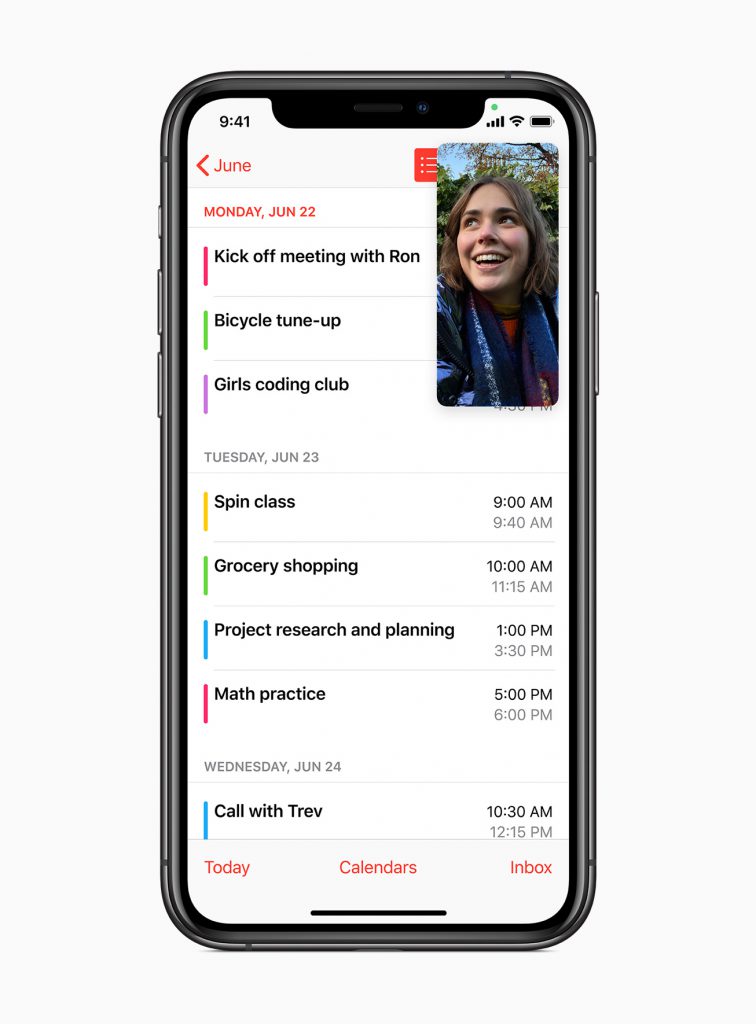
Enhanced privacy
Apple never fail its users when it comes to privacy. With iOS 14, all apps will be required to obtain user permission before tracking and the self-reported privacy practices will be mentioned reported by the Developers’ in the summary of the apps on App Store pages – similar to a food label.
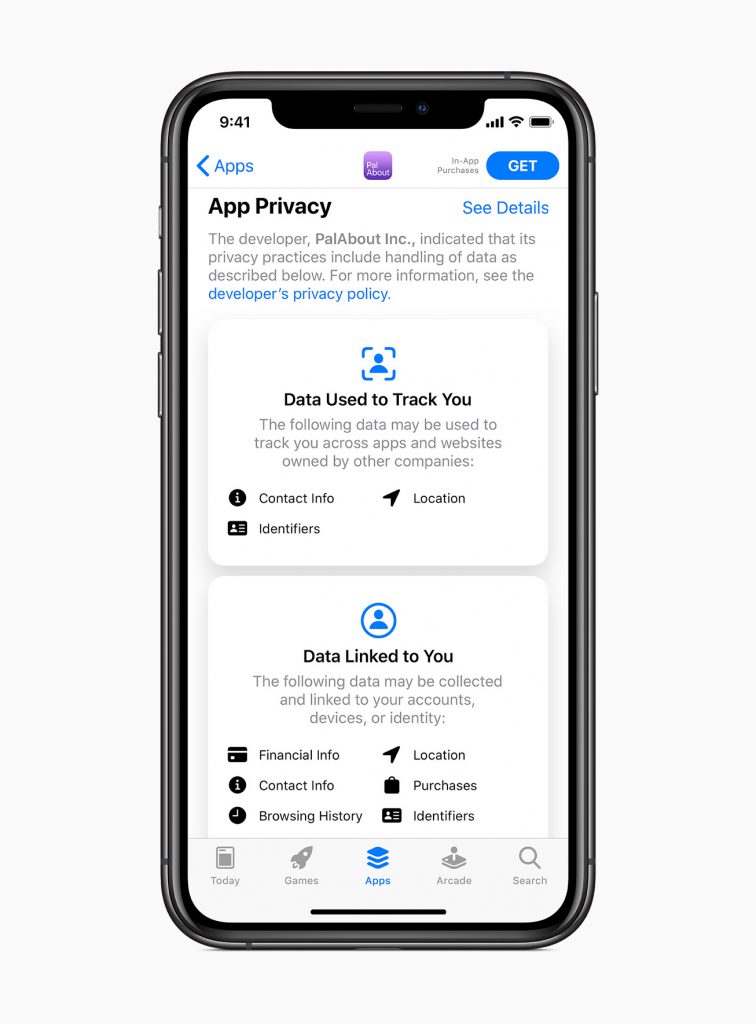
Users can now upgrade existing accounts to Sign in with Apple, choose to share their approximate location rather than their precise location when granting any app location access and will get more transparency into an app’s use of the microphone and camera.
Safari
Safari will have a Privacy Report in iOS 14 so users can easily see which cross-site trackers have been blocked. Safari will have a built-in translation for entire webpages. Safari will have a feature to monitor your passwords for any data breach by warning you when the passwords you’ve used before have become exposed without revealing your password information to anyone – even Apple.
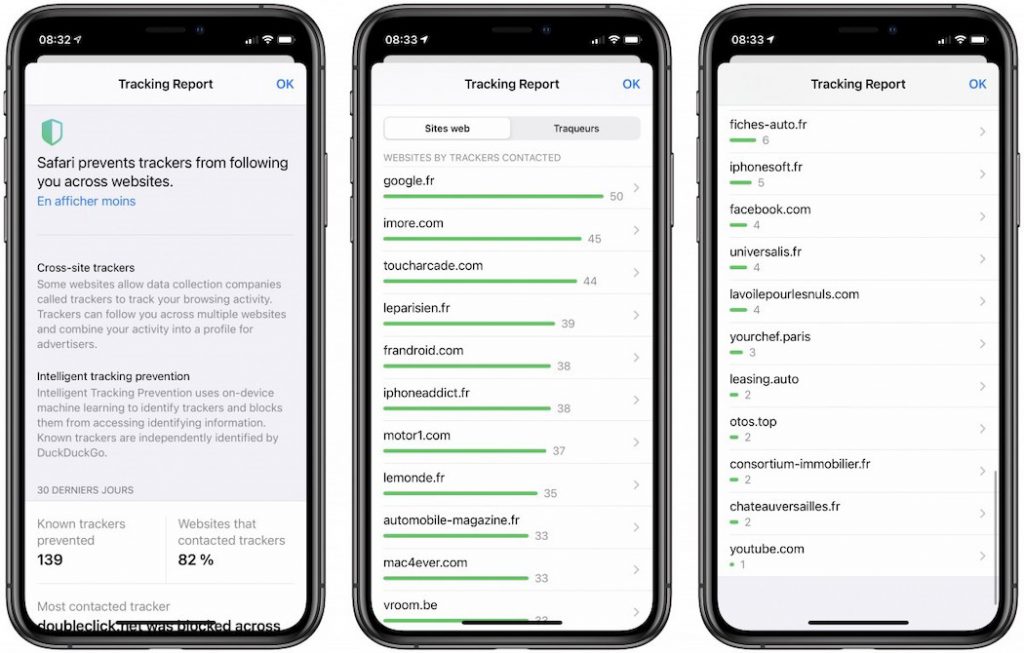
Digital car keys
A simple tap on car door handle will unlock your car with NFC.
With digital car keys feature in iOS 14, users will have to use iPhone and Apple Watch Series 5 to unlock and start their car. You’ll be able to share your digital car keys with someone else by using Messages so they can drive your car, for example. It’s easy to disable them though iCloud if a device is lost.
To start your vehicle you just have to place your iPhone on a reader or wireless charger inside the car.
An important thing to notice is that car keys feature will only be supported by certain devices: iPhone XR, iPhone XS, iPhone XS Max, iPhone 11, iPhone 11 Pro, iPhone 11 Pro Max, iPhone SE (2nd generation), and Apple Watch Series 5. It will be released to current iPhones with iOS 13.6 update in the next few days. It will enable you to unlock compatible cars, and start the engine, by waving an iPhone nearby.
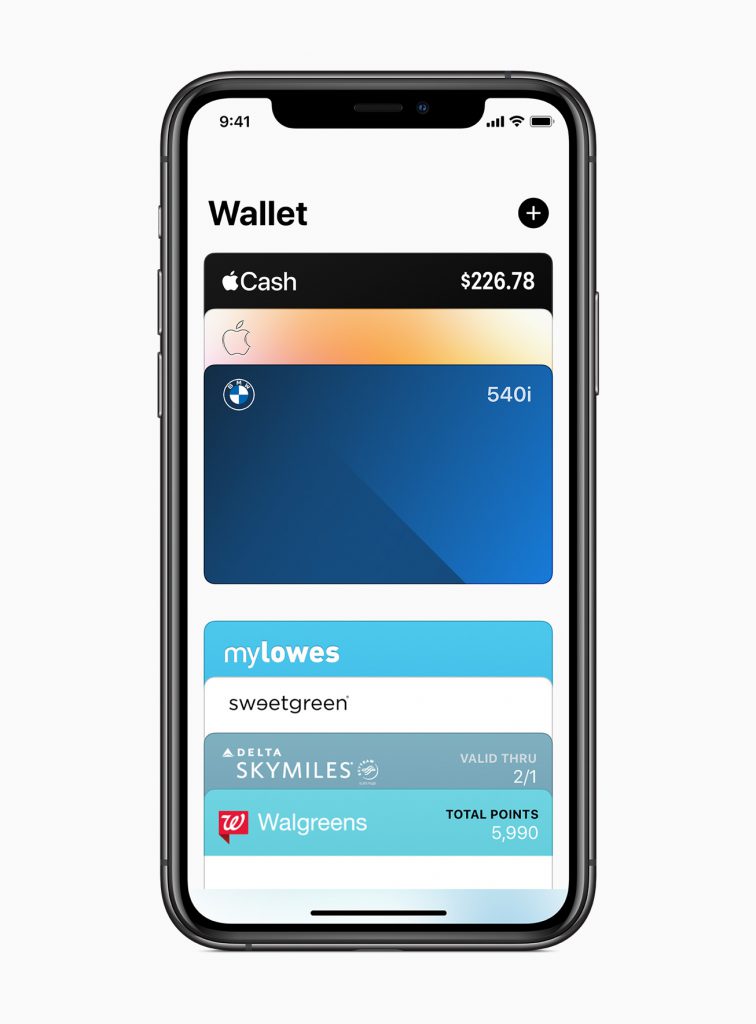
We hope you’ll love the new iOS 14. Do not forget to write your comment or ask us any questions. We’ll keep you posted about the latest iOS rollouts.
]]>